Historical Images Of The Cold War That People Rarely Get To See
Although both the United States Of America and the Union Of Soviet Socialist Republics would see mass celebrations with the ending of World War II, the jubilation between the former allies wouldn’t last.
Not only were the Soviets acutely aware of America’s nuclear capabilities by the end of the war, but the two nations had been allied by circumstance, not by ideological bonds. Indeed, their political differences would spark a long, mistrustful Cold War between the two nations that only ended when the Soviet Union did. However, the decades of the Cold War presented a wide variety of opportunities to capture the character of those tumultuous times in photographs.
Both Sides Increased Their Arsenal
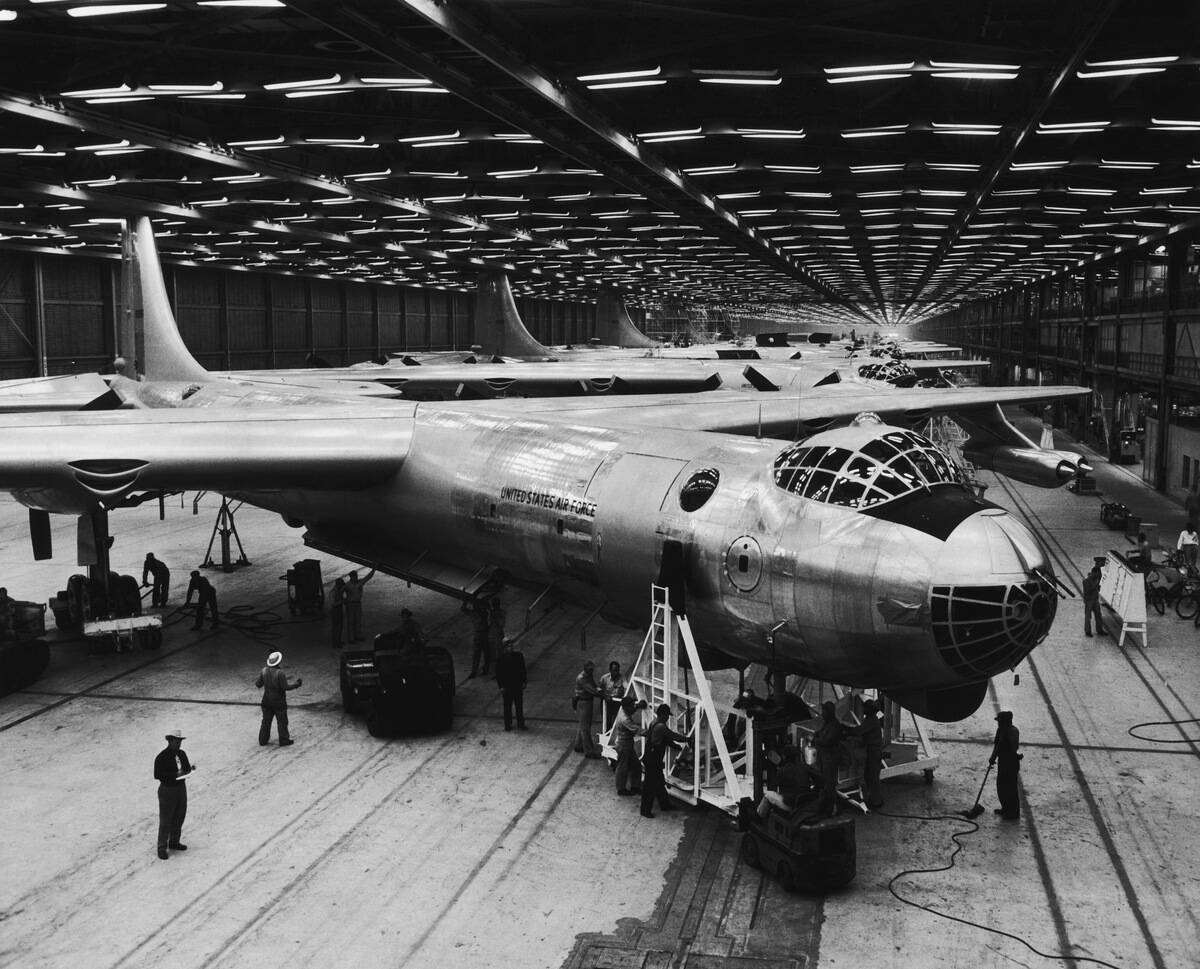
This image shows an American Convair B-36D — ironically known as the “Peacemaker” — which was one of the most iconic strategic bombers of the early Cold War.
The plane was first introduced in the late 1940s and entered full service with the U.S. Air Force in 1950. Its massive 230-foot wingspan was propelled by six powerful rear-facing propeller engines and four jet engines.
Khruschev Visited New York
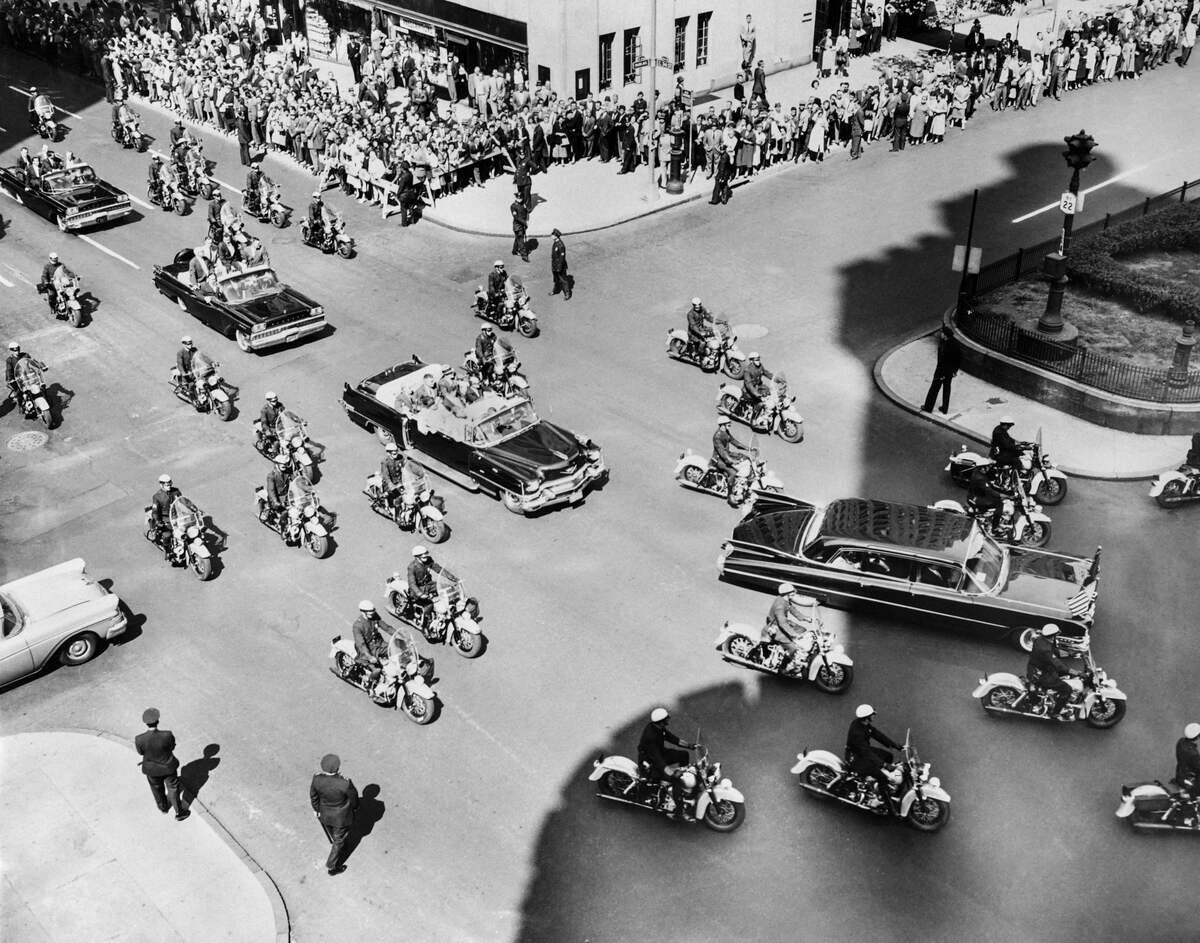
While the Cold War years were no doubt tense, there were consistent efforts at diplomacy — or at least efforts to give the impression of diplomacy. One such event was the visit of Soviet Premier Nikita Khruschev to New York in 1959.
It came during a relative lull in Cold War tensions, and Khruschev spent a total of 13 days on U.S. soil in an effort to promote “peaceful coexistence” between the superpowers. Of course, future events would mean that tensions would soon ratchet up again.
The Soviets Reinvented East Germany
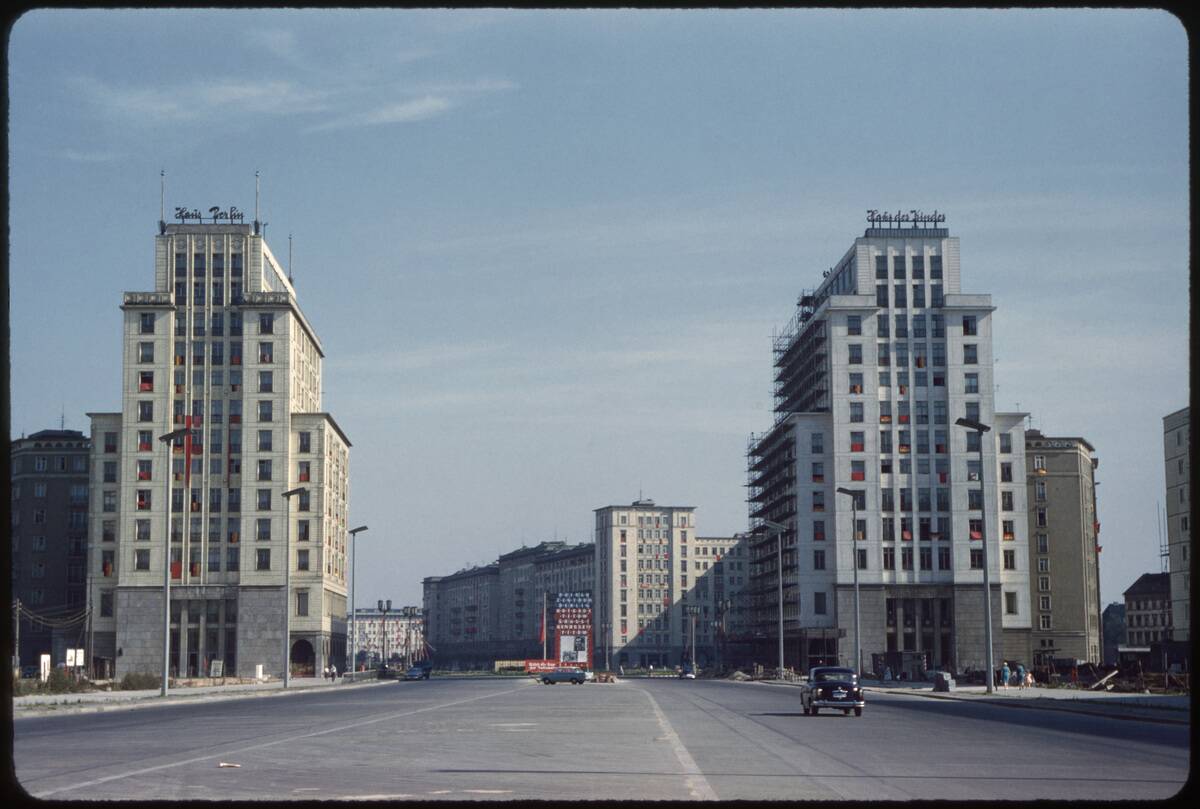
This image of Stalinallee, located in East Berlin, shows the state of life behind the Iron Curtain in the early ’60s. The area had been heavily damaged during World War II, and the Soviets sought to rebuild it in their own image.
The area featured massive apartment blocks, similar to those that were seen throughout the Soviet Union. It formed a direct contrast to the more utilitarian and commercial architecture that was emerging in a rebuilt West Berlin.
The Berlin Wall Wasn’t Built Right Away
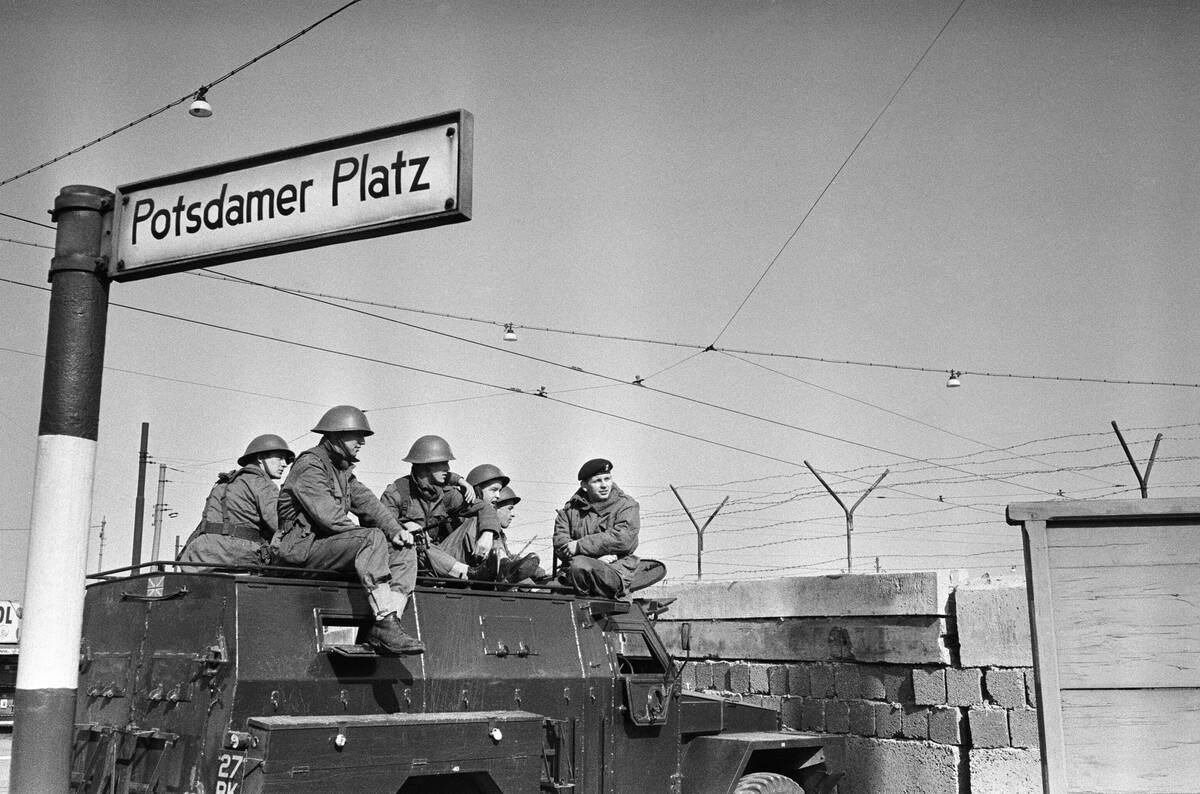
The Berlin Wall is such an enduring symbol of the Cold War that it’s easy to forget that the wall didn’t really exist for the first decade or so of the Cold War. This 1961 photo shows British troops along the Berlin Wall shortly after it was fully completed.
At first, the wall was just a mess of barbed wire and concrete blocks, but over time it evolved into a heavily fortified 96-mile wall complete with guard towers.
May 9 Was An Important Day
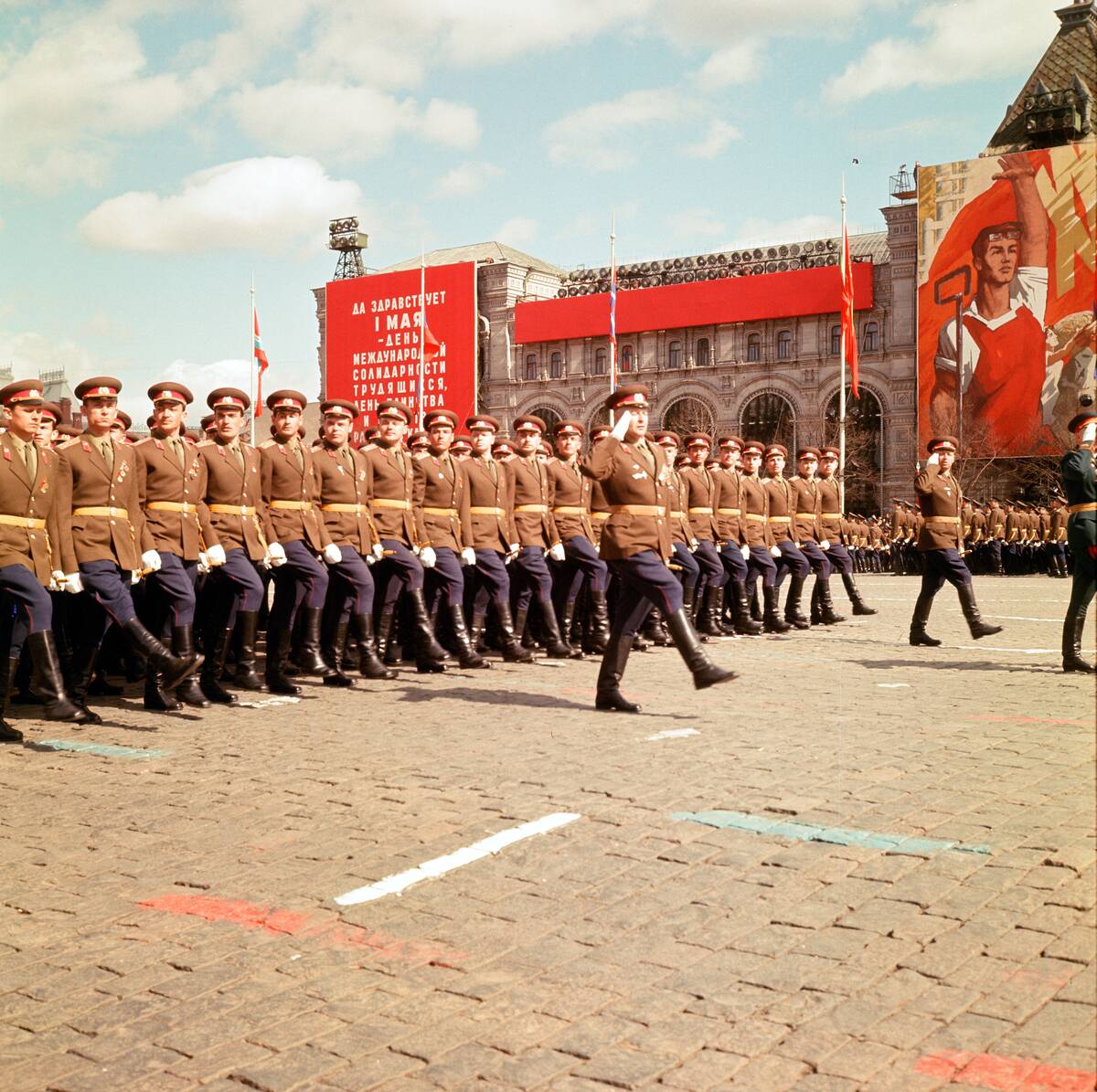
May 9th marked the anniversary of Nazi Germany’s surrender in World War II — an important day for both Cold War superpowers, as they’d fought together against the Germans.
However, the May 9th parade in 1967 had special significance for the Soviet Union. It marked not only the World War II anniversary, but also the 50th anniversary of the 1917 Bolshevik Revolution.
Radio Free Europe Was A Key Tool
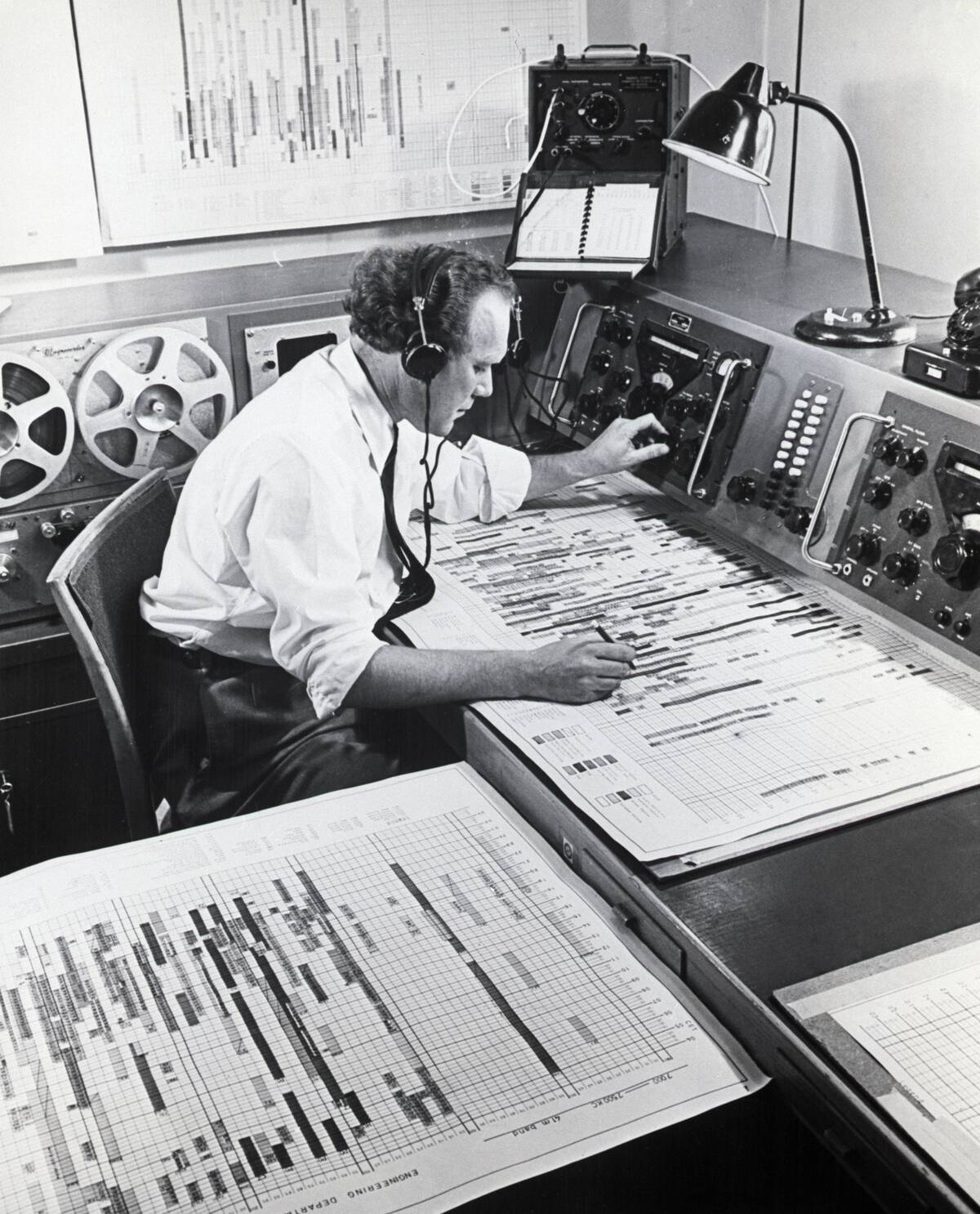
Radio Free Europe (RFE), first established in 1950 and funded covertly by the CIA for much of its early history, set out to broadcast in multiple Eastern European languages for listeners located behind the Iron Curtain.
RFE’s mission was to promote democratic values, encourage resistance to communist regimes, and offer alternative perspectives to Eastern Bloc state media. While Voice of America was a direct mouthpiece of the U.S. government, RFE positioned itself as a more independent broadcaster.
The Berlin Wall Was Tightly Controlled
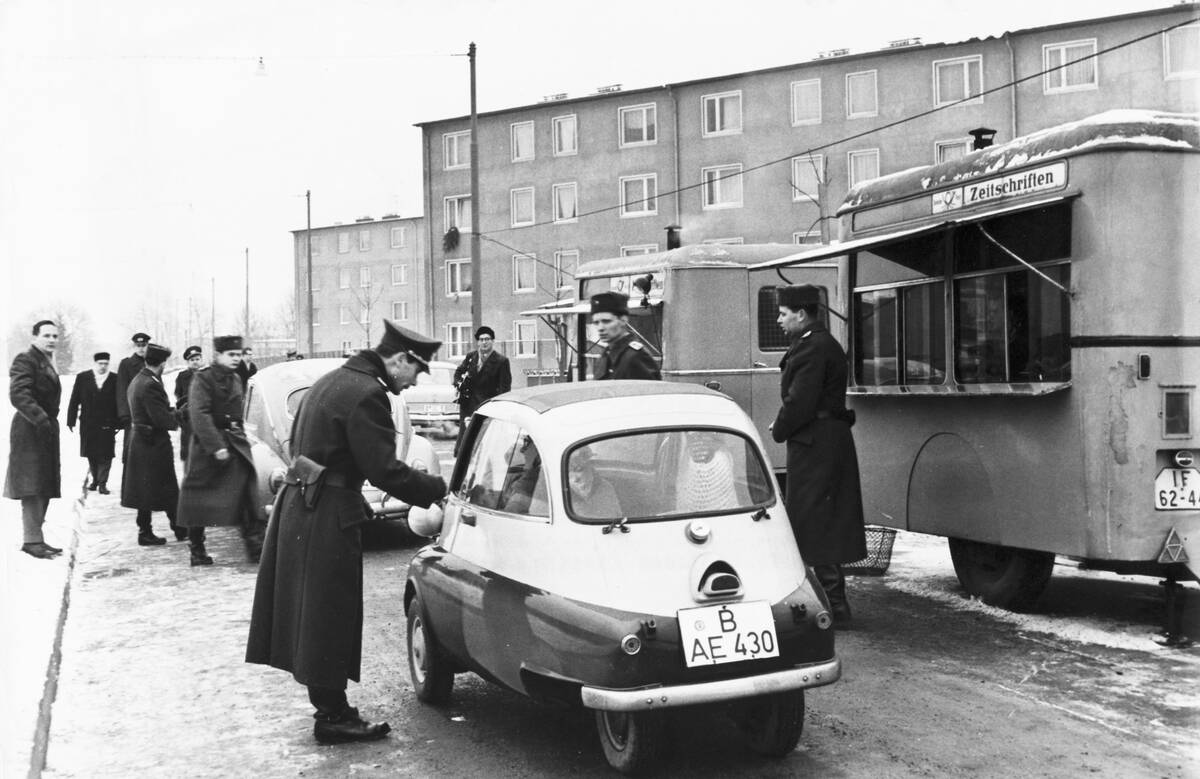
While it was possible for people to cross between East Berlin and West Berlin, these travellers would have to have the proper paperwork and a reason for crossing the wall.
The checkpoints along the Wall changed over time. This 1963 photo shows a less fortified, more chaotic checkpoint in the early days of the Berlin Wall.
Balloons Were A Propaganda Tool
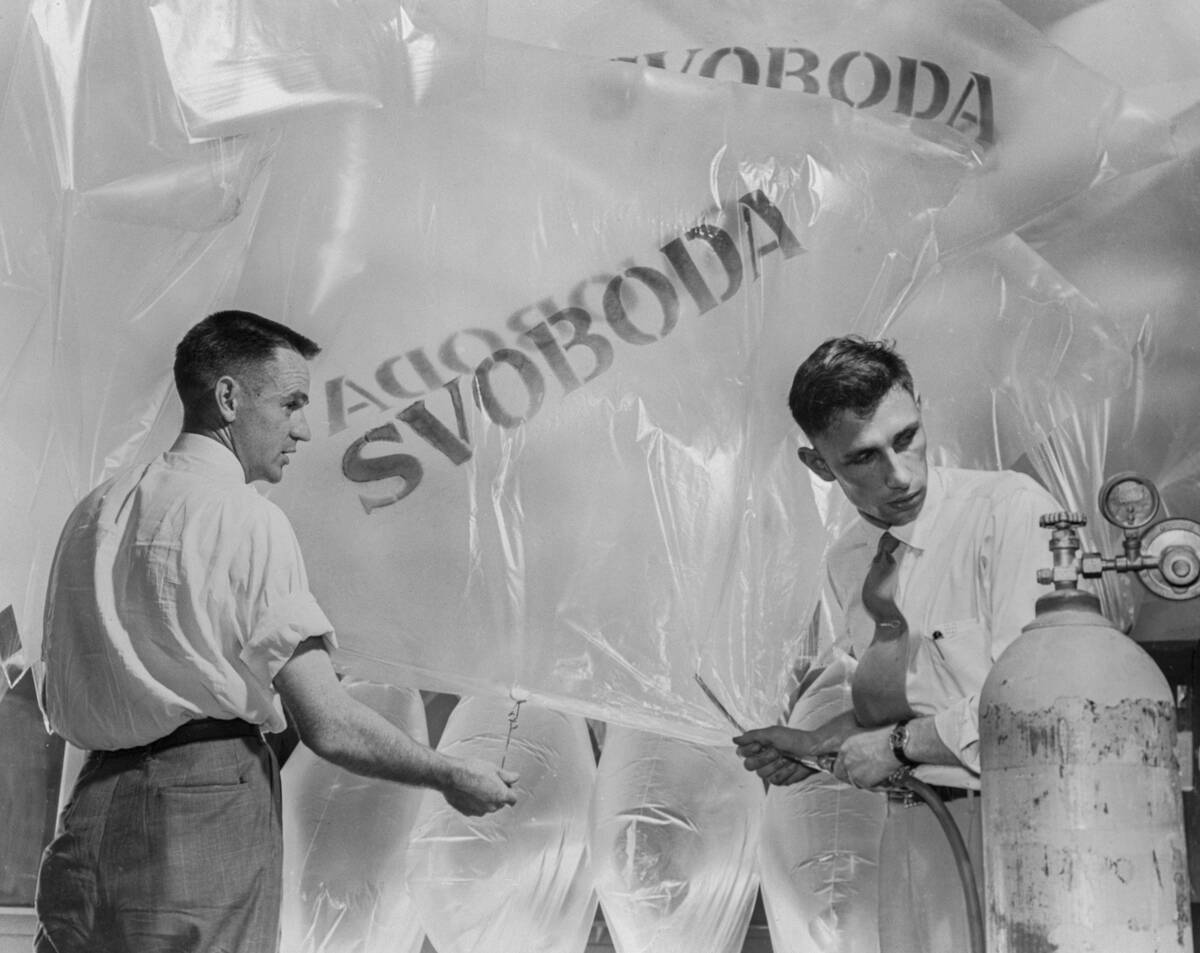
These workers from the Crusade For Freedom organization are putting the final touches on balloons that are intended to carry and then drop anti-communist messages to countries beyond the Iron Curtain.
These balloons would be launched from sites in West Germany into the prevailing winds, and were designed to float across East Germany, Czechoslovakia, Poland, and other Warsaw Pact nations.
Khrushchev Toured Various Countries
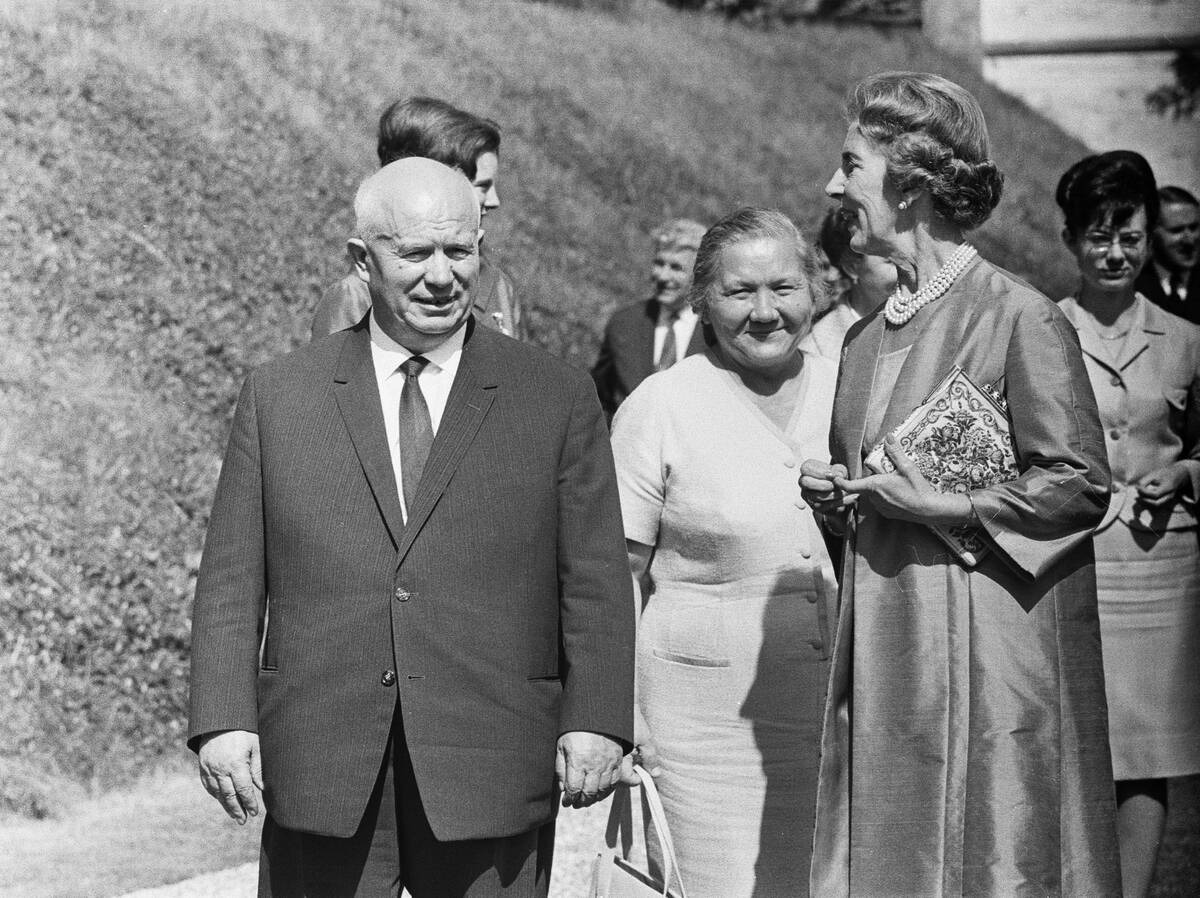
When Nikita Khruschev visited Denmark in 1964, it marked the first official visit by a Soviet leader to Denmark — a significant milestone, as Denmark was a NATO member and a close ally of the United States.
His visit was designed to promote peaceful coexistence in a country that was known for its pragmatism. While Denmark was firmly an ally of the West, it had a reputation for being open to dialogue.
France Did Not Appreciate Khruschev’s Visit
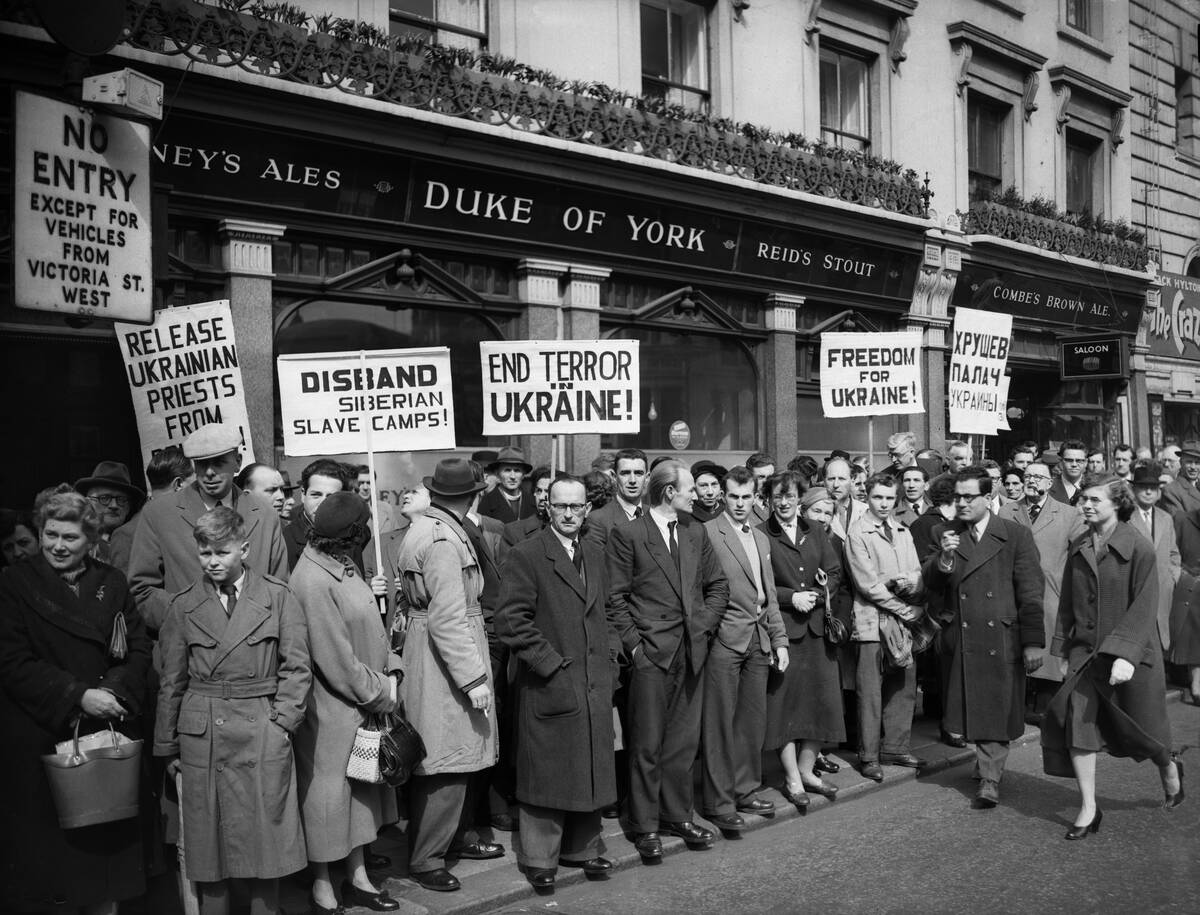
When Khruschev stopped in France in 1956, he received a decidedly chilly welcome. While the French government, led by Prime Minister Guy Mollet, welcomed the opportunity to promote diplomatic talks, many French citizens took to the streets in protest.
Protesters pointed to the brutal Soviet crackdown in Hungary and continued repression in Eastern Europe, and questioned why their country was welcoming the Soviet regime with open arms. These protests occasionally turned violent.
These Protests Now Look Sadly Familiar
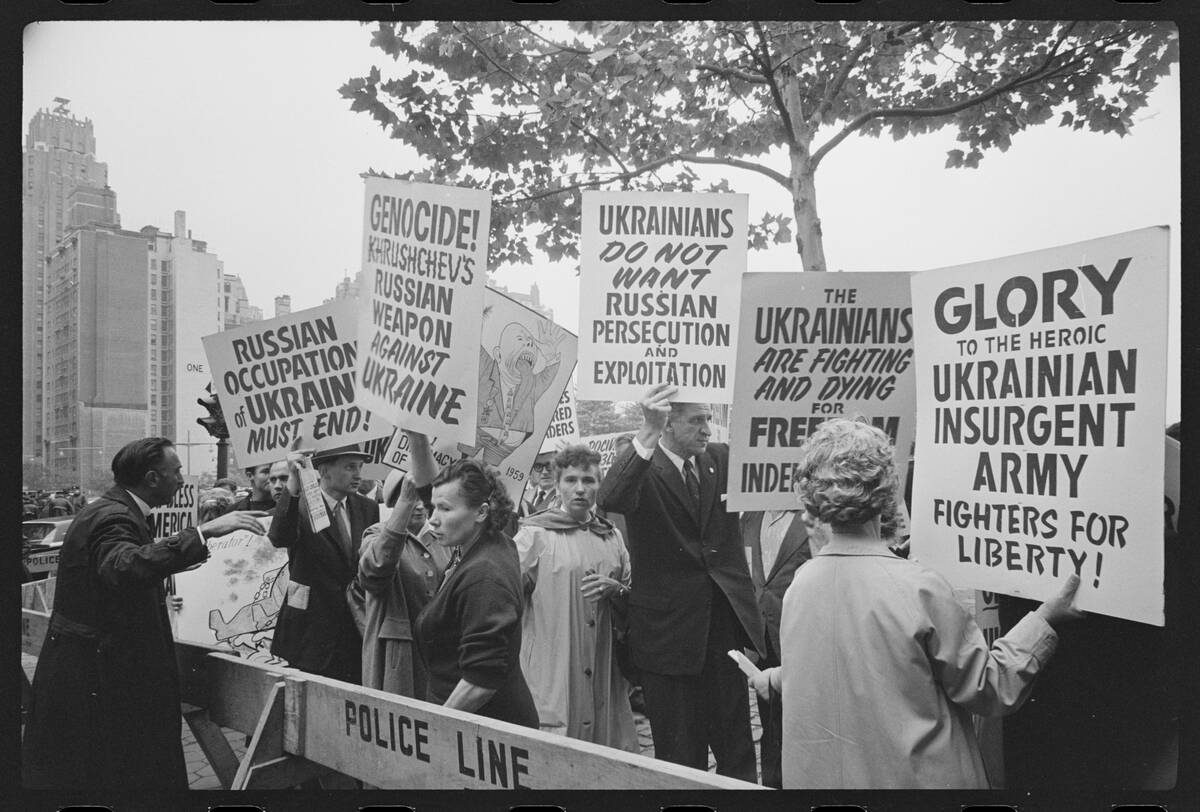
Those watching and waiting for the resolution to Russia’s protracted invasion of Ukraine are likely to find their sentiments reflected in these strongly worded protest signs from a 1960 demonstration near the United Nations building in New York City.
Although the subject of this protest was Nikita Khrushchev rather than Vladimir Putin, the Soviet Premier’s state visit marked a serious opportunity for protestors to voice their dissent against his government’s occupation of Ukraine.
Checkpoint Charlie Doesn’t Look Like This Anymore
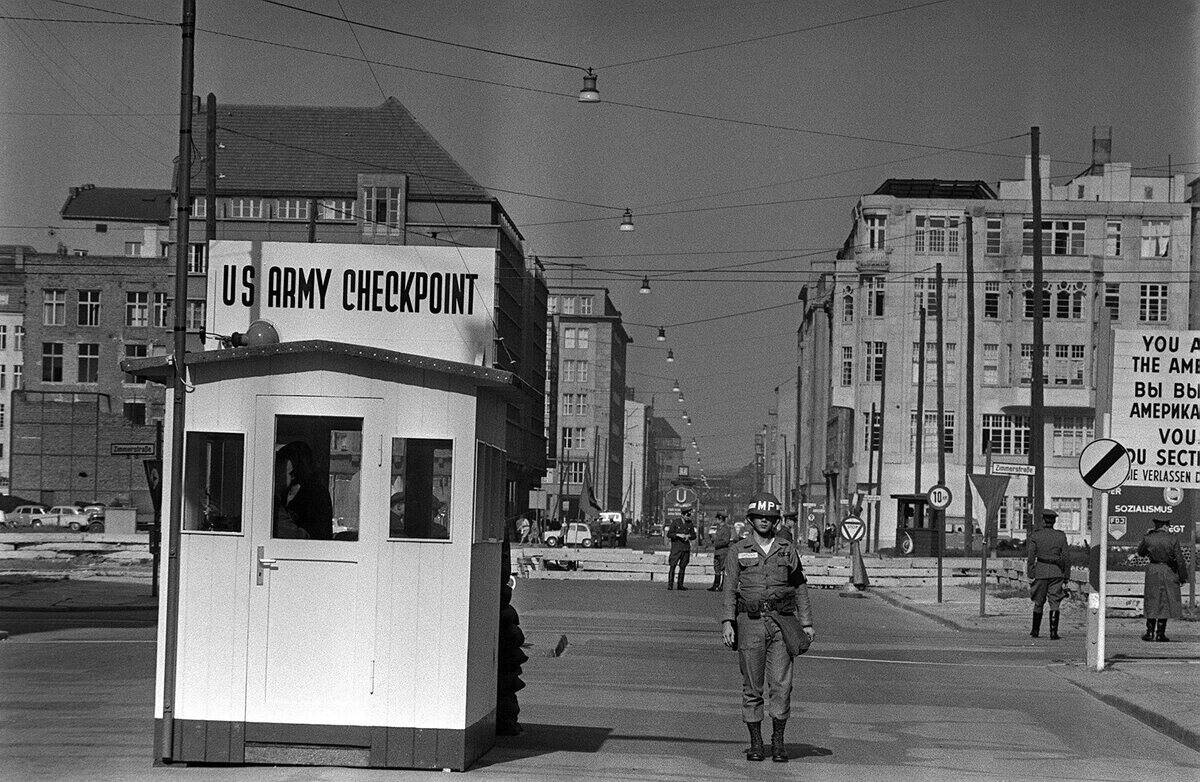
Although the former U.S. Army checkpoint nicknamed Checkpoint Charlie is now a minor tourist attraction among Berlin’s bustling cityscape, it once marked the final limit before an anxiety-inducing crossing from West Berlin to East Berlin.
By the time this photo was taken in October of 1961, construction of the infamous Berlin Wall that fortified the East German side of this divide had already begun. However, the open space here shows that it was far from finished.
A Friendly Relationship That Wouldn’t Last
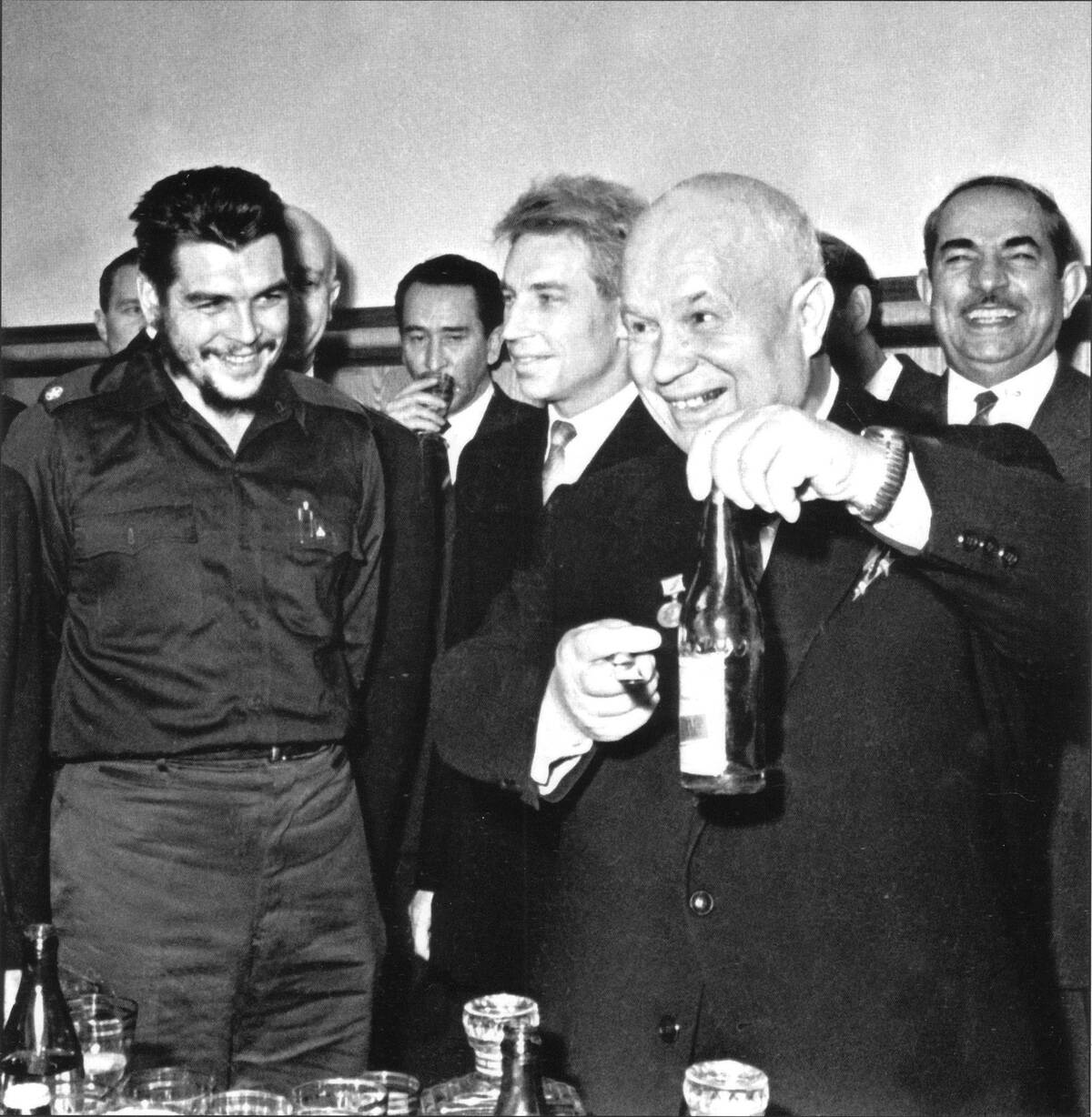
Although it’s unclear when exactly this photo was taken, it depicts Argentine-born Cuban revolutionary figure Che Guevara during a visit to Moscow. As we can see, he had a very friendly meeting with Soviet Premier Nikita Khrushchev.
However, PBS noted that Guevara’s relationship with the Soviet Union would be far more icy after the Cuban Missile Crisis was resolved. Not only did the move to relocate ballistic missiles from Cuba lead Guevara to question Khrushchev’s commitment to international socialism, but he was particularly incensed by the Soviet insistence that Cuba keep specializing in sugar production. As he once put it, “The socialist countries are, in a way, accomplices of imperialist exploitation.”
The First Sign Of What Was To Come
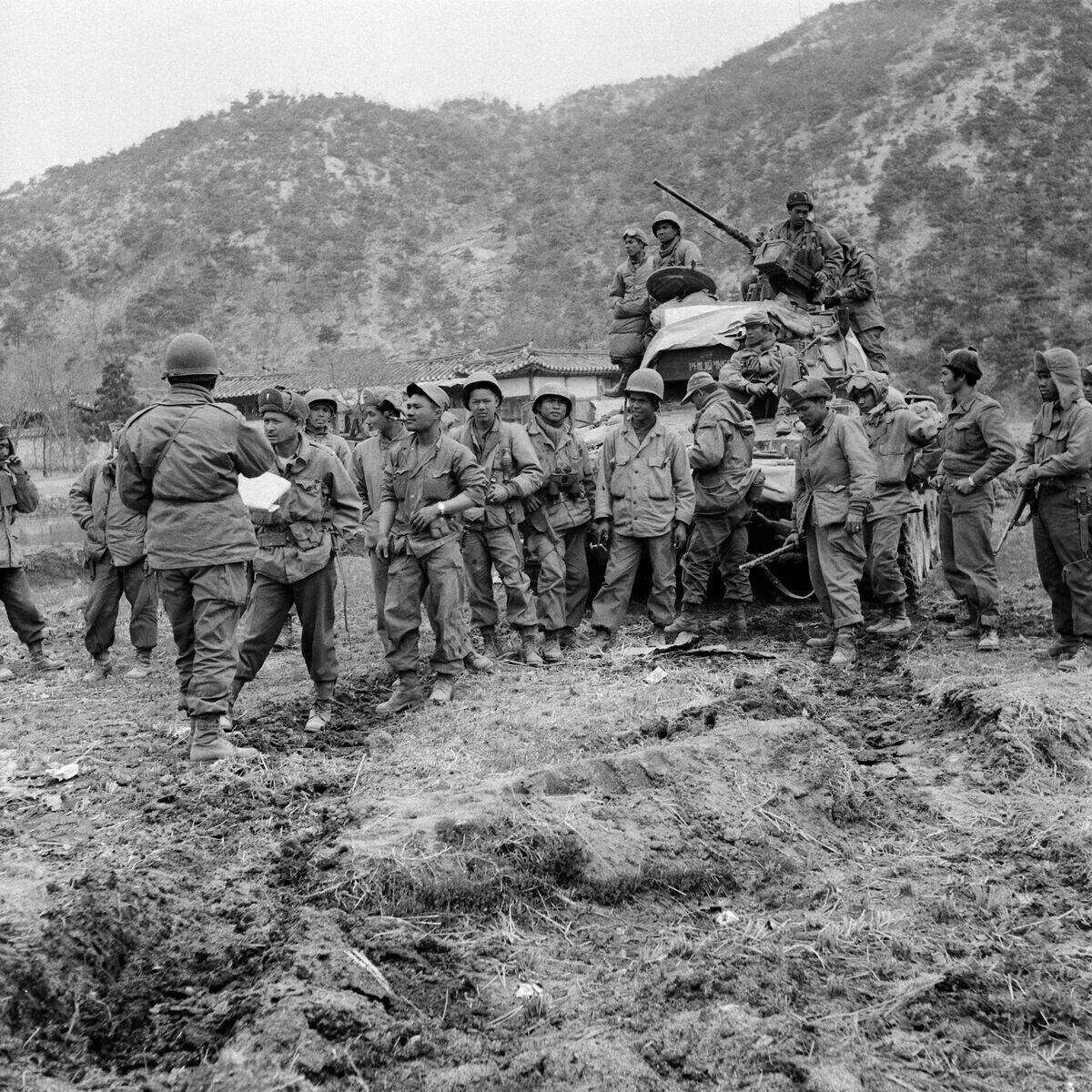
Although the Vietnam War was the most infamous of America’s conflicts during the Cold War, part of the reason it likely dragged on as long as did was the expectation that it would proceed similarly to the first military action of the Cold War: The Korean War.
Backed by China, this conflict saw North Korea send 75,000 troops to invade its southern neighbors on June 25, 1950. Thanks to intervention from the United Nations — particularly the United States — South Korea was able to hold out until the armistice on July 27, 1953, that leaves the two nations divided to this day.
Behind The Scenes Of A Pivotal Address
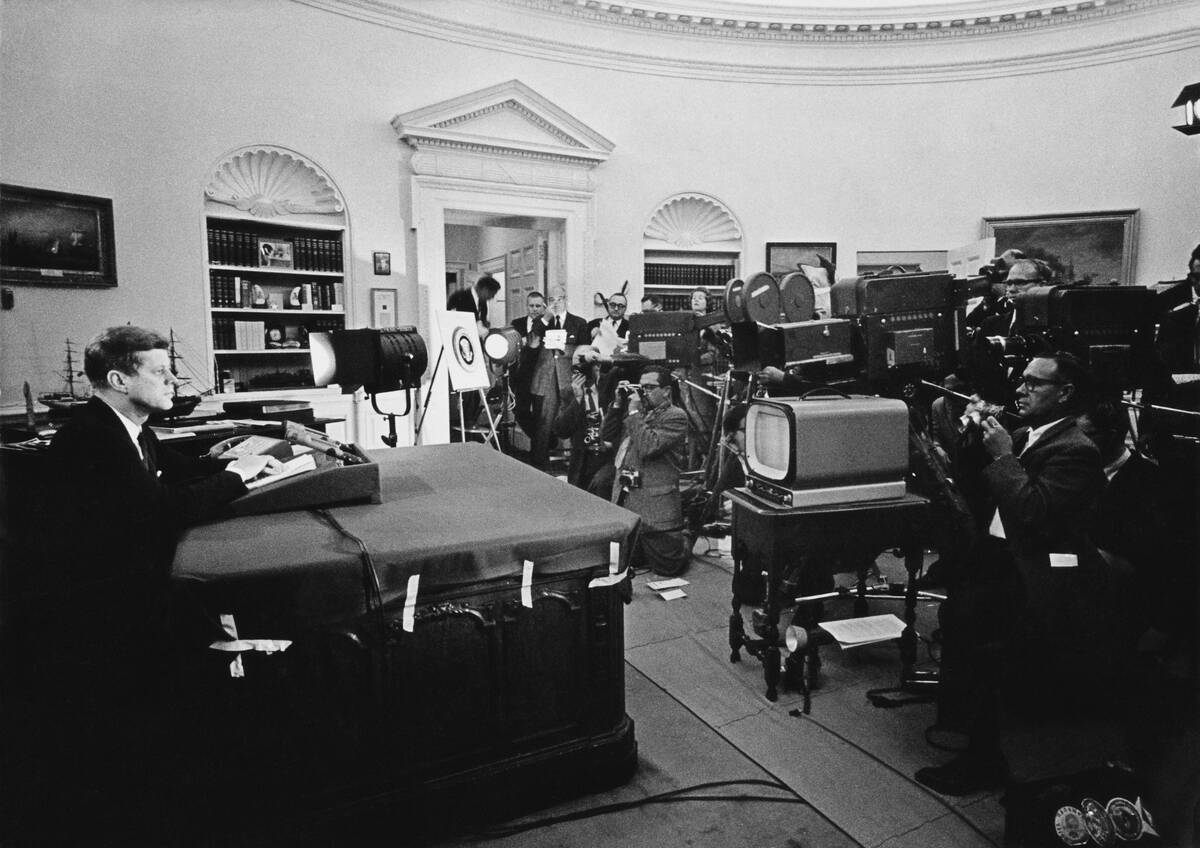
Although President John F. Kennedy was more apt than his predecessors to harness the power of television, it’s easy to forget how bulky and complex the setup around him would have been in an office that wasn’t build for it.
Still, the crowding of reporters and equipment is a sign of the gravity of Kennedy’s address. as this marked the moment he officially announced America’s naval blockade of Cuba on October 22nd, 1962. As such, the Cuban Missile Crisis became a publicly-known issue.
The Friendliest The World Had Ever Seen Them
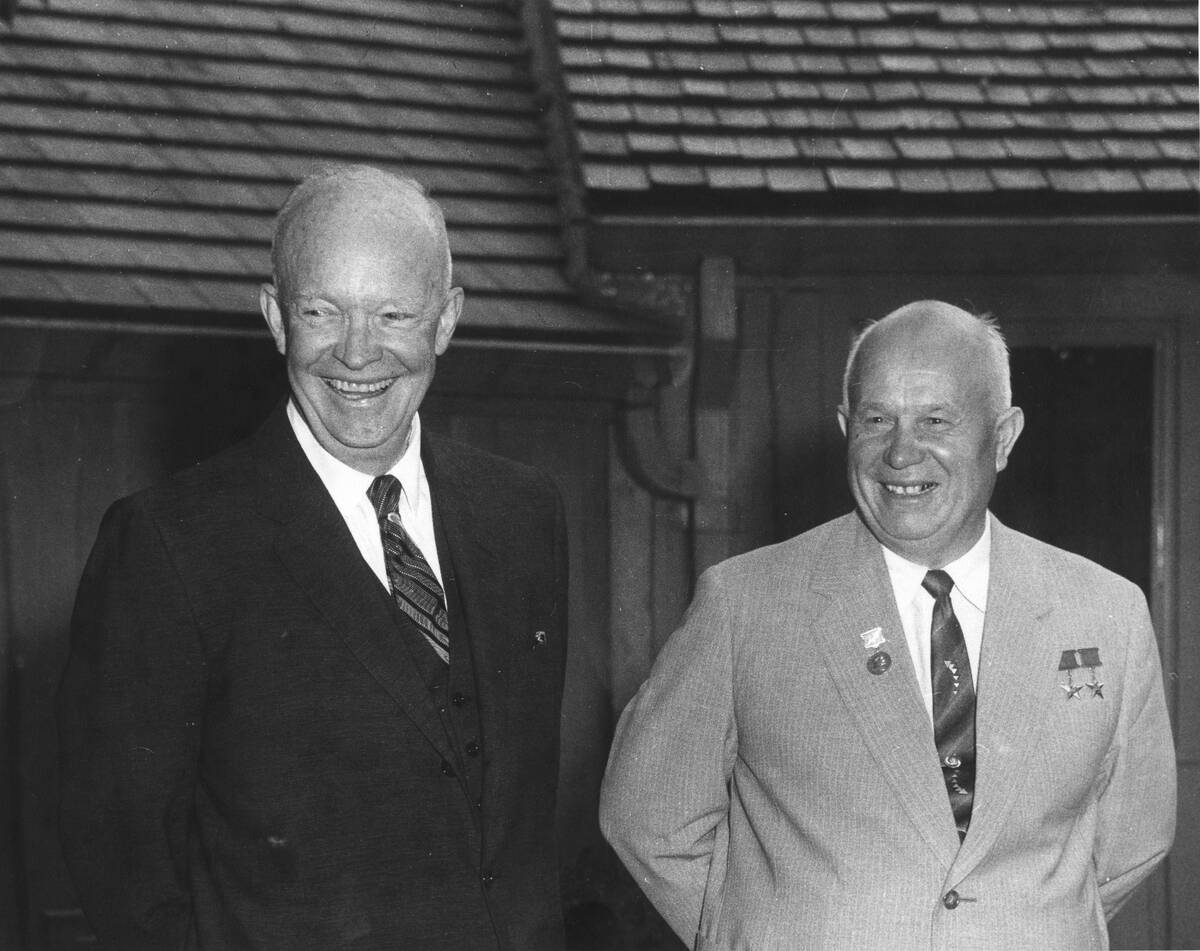
Although the Cold War wouldn’t officially end until the Soviet Union collapsed in 1991, there were nonetheless periods of cooperation and relative calm between the United States and the USSR between the tensions of 1947 and that collapse.
Indeed, one of those stable periods occurred earlier than it may have seemed, as despite how their discussions behind closed doors may have gone, President Dwight D. Eisenhower and Premier Nikita Khrushchev were all smiles in this photo from 1959. On September 25 of that year, Krushchev visited Camp David, Maryland.
A Look At A Building Not Just Anyone Could See
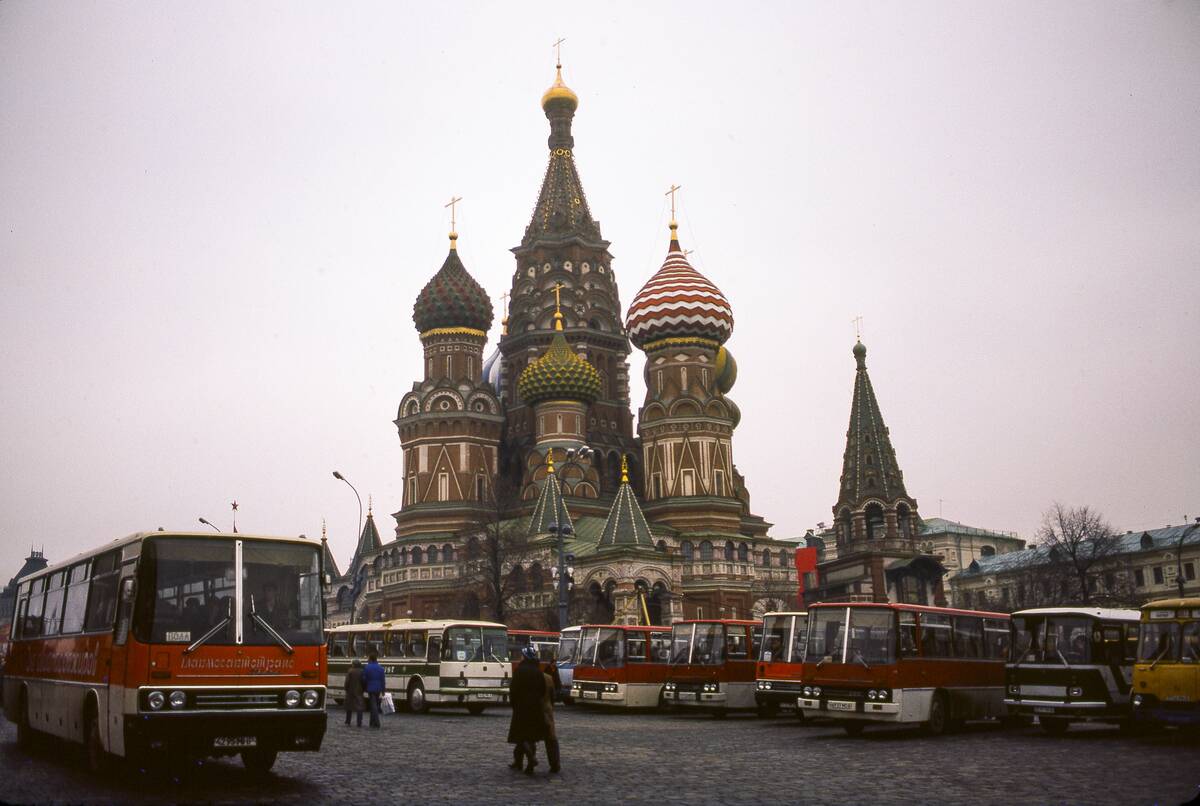
Although it wasn’t impossible for Western tourists to see the Kremlin even before this photo was taken, this photo captures the iconic Russian structure on a big day for the Soviet Union.
That’s because this was taken on November 7, 1983, a day when tourists descended on Moscow from all over Russia. Specifically, it was the 66th anniversary of the Russian Revolution that started the Soviet Union in the first place. Spirits were high on that warm, sunny day.
The Home Front Falls Victim To Hysteria
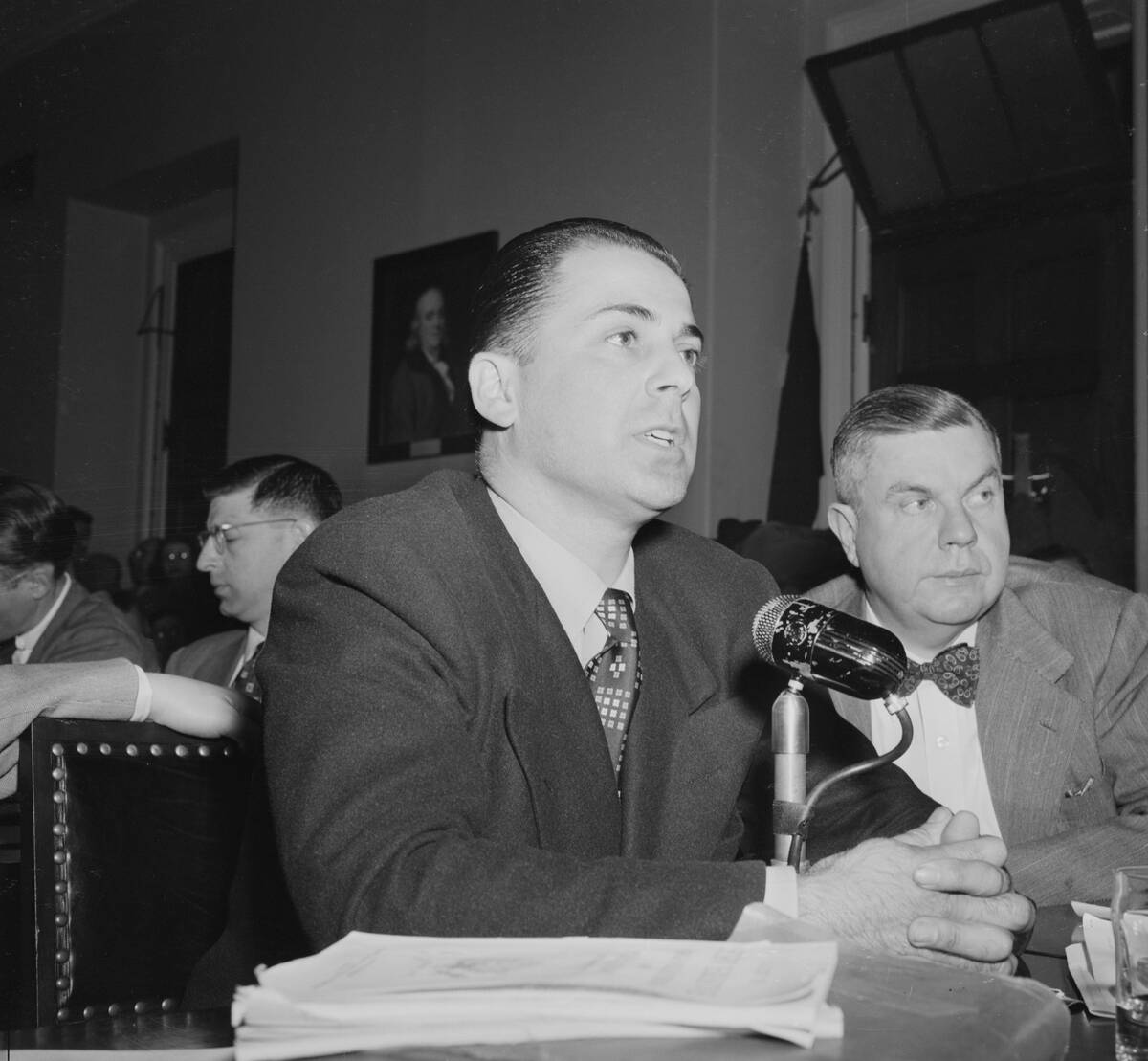
One of the most infamous consequences of the emergence of the Cold War on American life was the emergence of the Red Scare, which empowered the House Un-American Activities Committee — helmed by Senator Joseph McCarthy — to put prominent Americans under a microscope amid paranoid suspicions of communism.
In this case, screenwriter Robert Lees was brought before the committee and refused to answer their questions about his political beliefs. As he argued, that was a matter they had no right to question him about. Naturally, this didn’t please the committee and Lees would become one of the Holywood figures who found themselves blacklisted.
France Underwent A Complicated Election
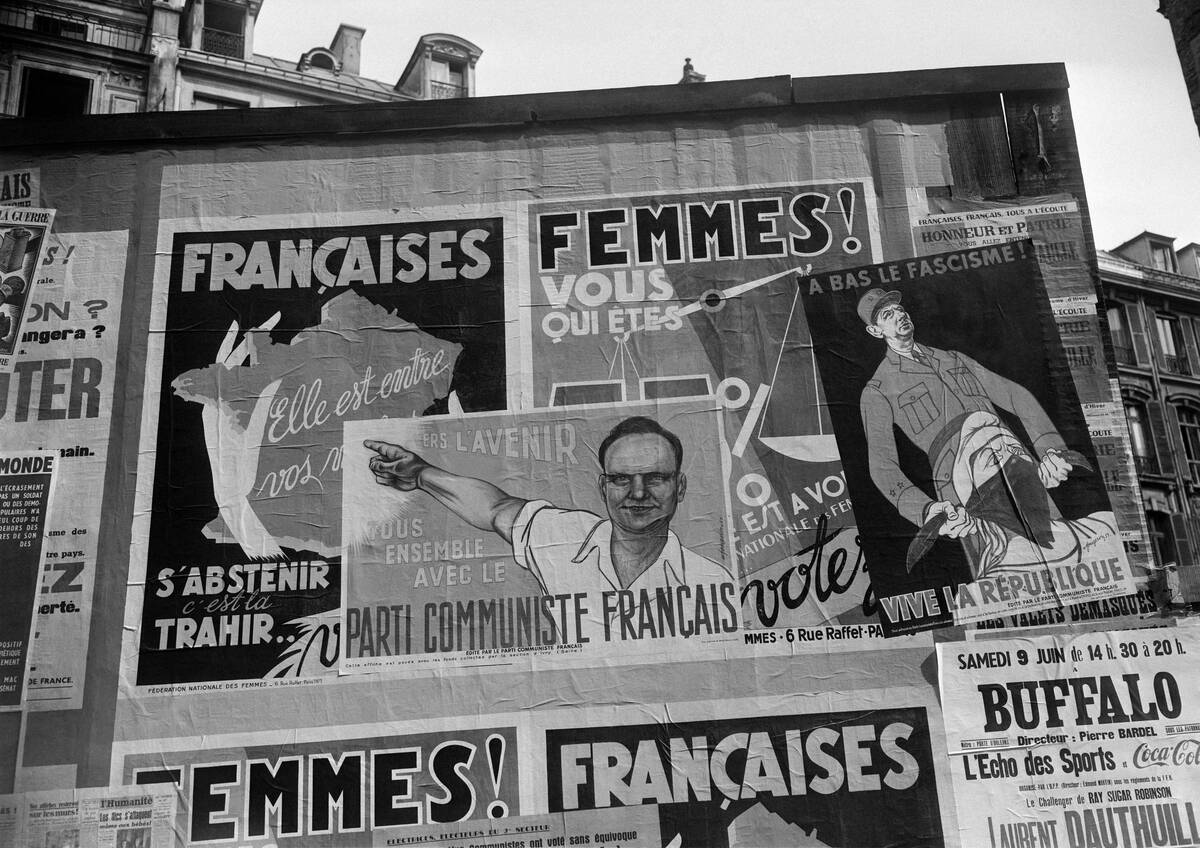
The French legislative elections were a tumultuous time, which was reflected in the unlikely coalition government that ended up winning out. To illustrate the complexity, it’s worth noting that the election’s biggest winners were Charles de Gaulle’s RPF and the French Comumnist Party.
There are also signs from the National Federation of Women, who pushed for the rights of women to vote in French elections. Although suffrage was granted to French women in 1944, it was nonetheless true that Muslim women in what was then the French colony of Algeria had to wait until 1958.
Khrushchev’s Smile Was Even Bigger When This Was Over
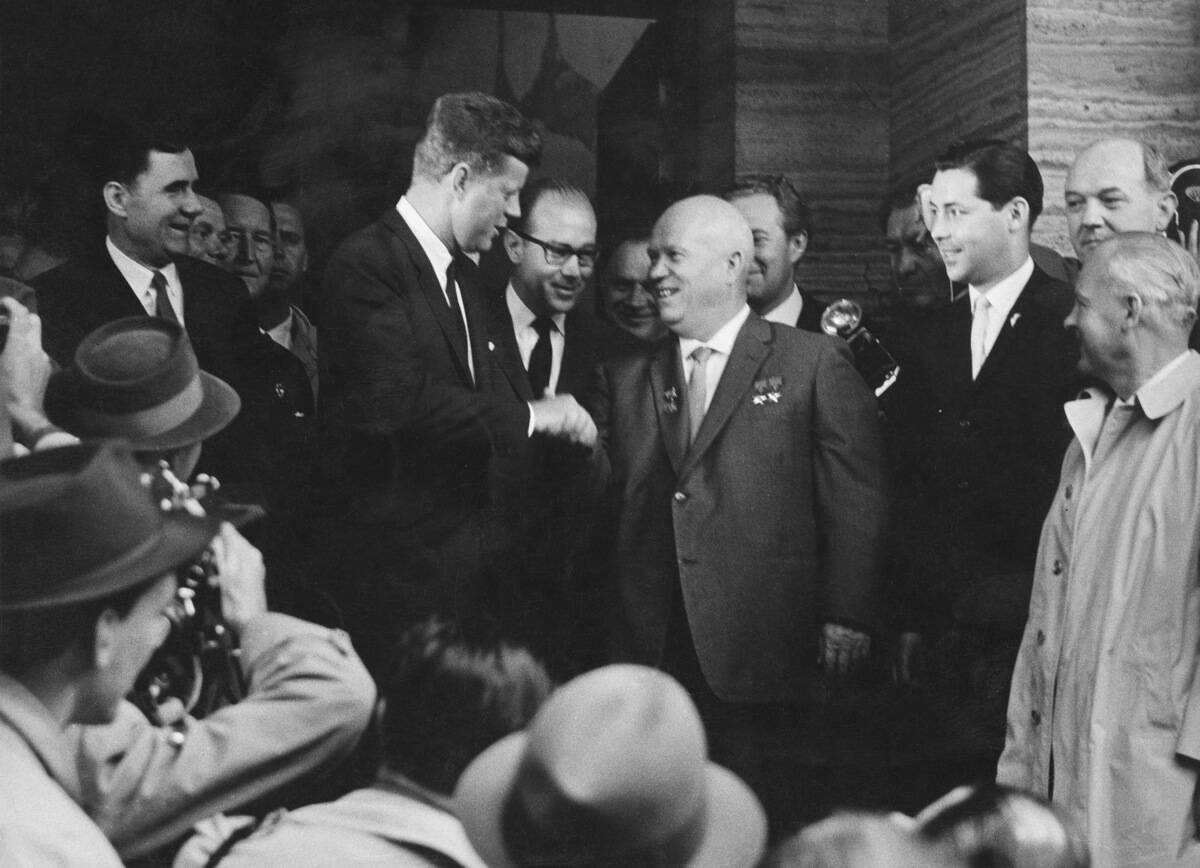
Although President Kennedy’s handling of the Cuban Missile Crisis, proposed civil rights legislation, and ambitious plan for the Space Race all make him a historic president, his administration wasn’t without its share of blunders.
This handshake between him and Khrushchev in 1961 was the start of one of them, as Khrushchev famously came out ahead of the inexperienced, unprepared Kennedy during the Vienna Summit intended to discuss the division of Berlin and the status of Laos.
How The Cold War Was Truly Fought
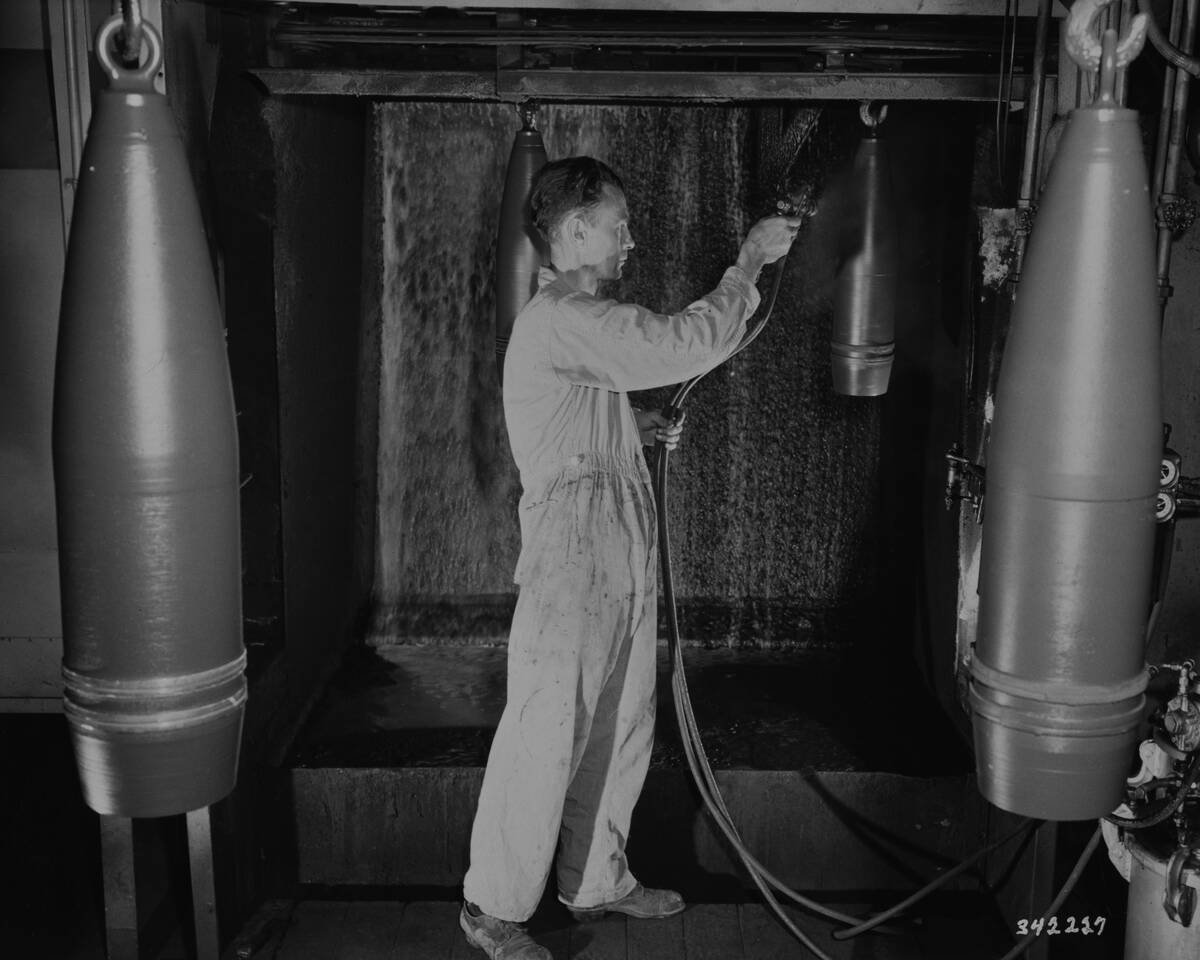
Although there were some full-scale military conflicts that were byproducts of the Cold War (the Vietnam War being the most infamous among them), the wider conflict largely consisted of who could present the most intimidating threat to the other via their respective gargantuan nuclear arsenals.
Indeed, this is a ground-floor view of the work to construct America’s arsenal, as we can see a munitions worker painting warheads at the Red River Arsenal in Texarkana, Texas.
An Unsung Contributor To South Korea’s Defense
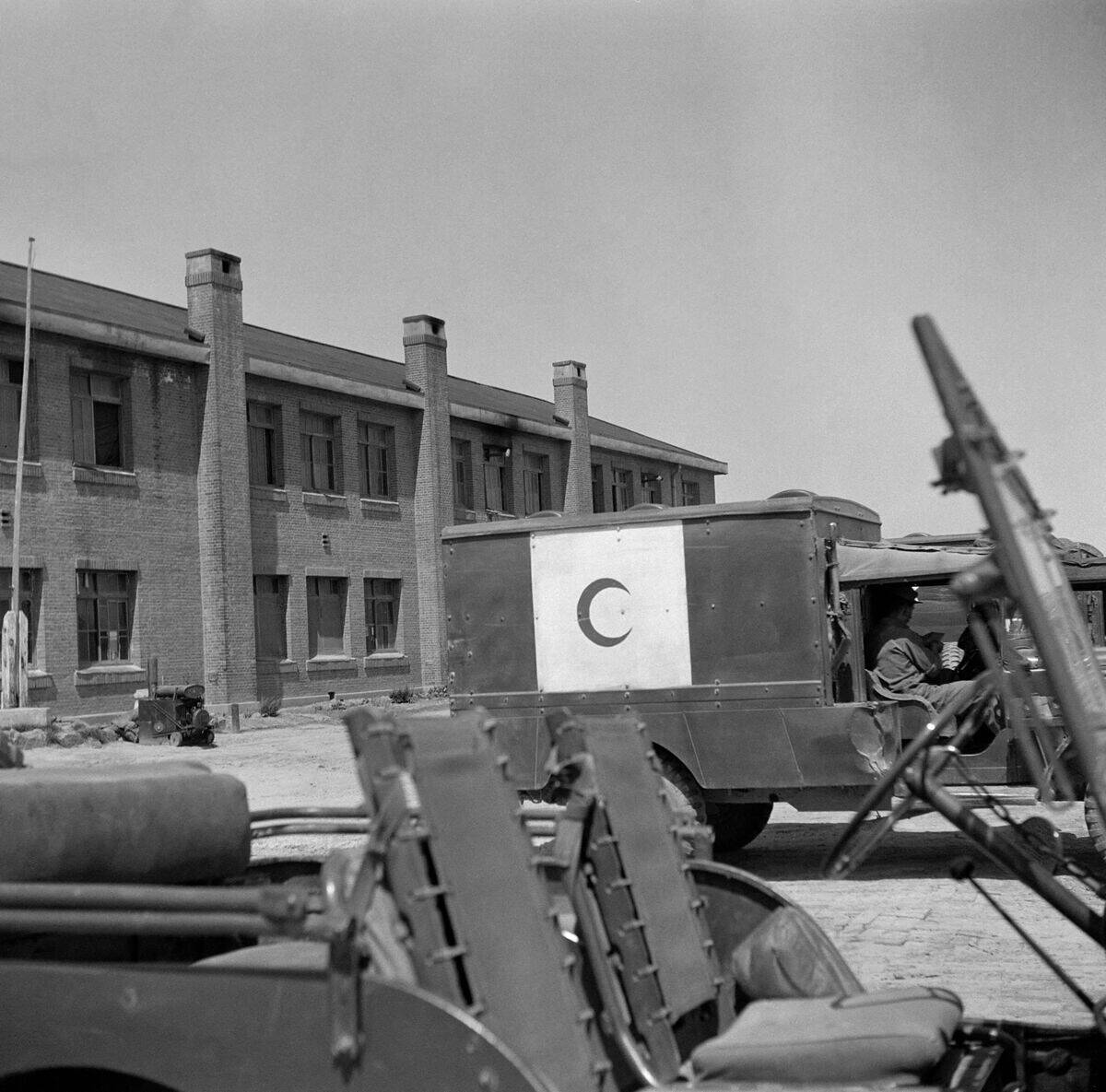
Although 16 countries deployed military personnel to defend South Korea from North Korean and Chinese aggression, Turkey (now Türkiye) was second only to the United States in its ardent involvement. 5,000 Turkish troops arrived in South Korea on 19 October 1950, which was just four months after the conflict began.
Not only did Turkish forces remain in place even after the armistice, but the Turkish Brigade was the only force of its size to be attached to American forces during the war. Specifically, they became part of the U.S. Army’s 25th Infantry Division.
A Monument To A Lifesaving Operation
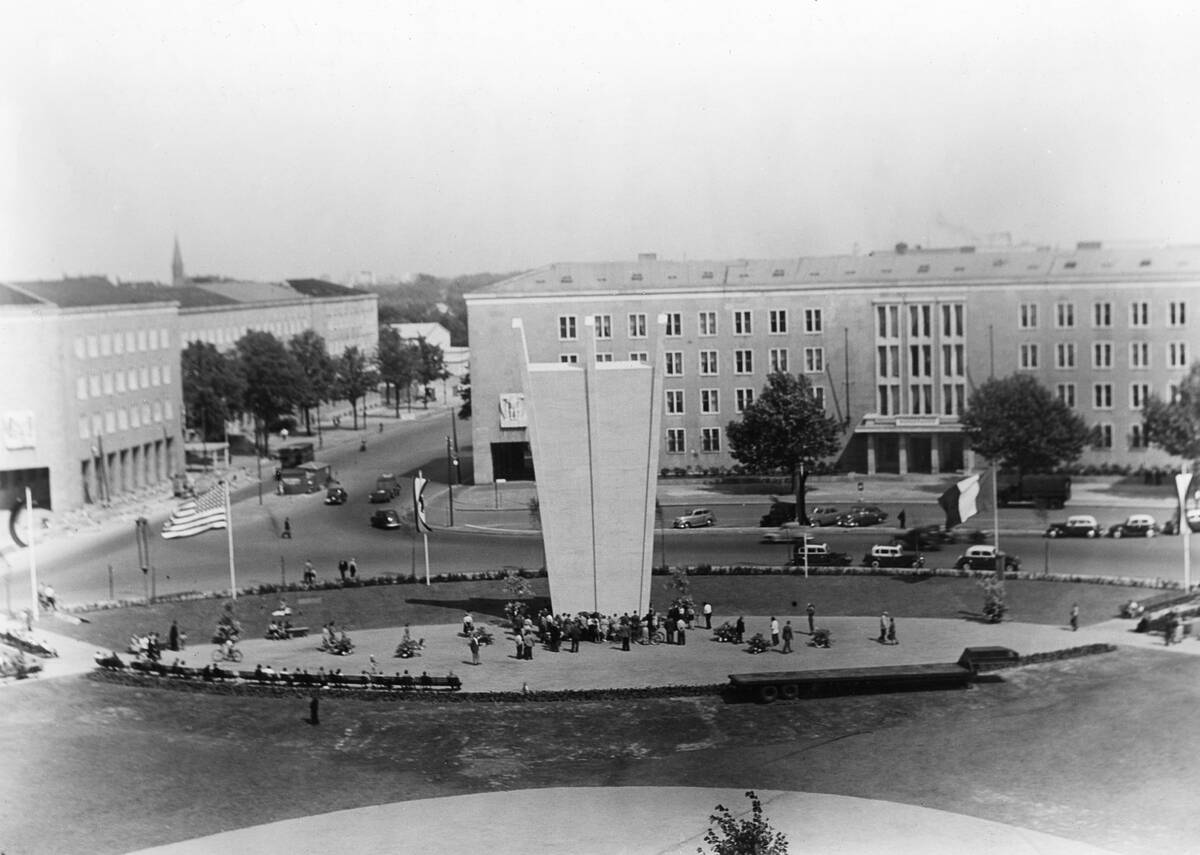
What began as a dispute over German currency resulted in a near-total blockade of all supplies to West Berlin in June of 1948. To address the potential starvation of the city as a result of this escalation, the United States, the United Kingdom, France, Canada, Australia, New Zealand, and South Africa organized the Berlin Airlift, an unprecedented campaign to keep the city supplied with food and fuel airdrops.
Although the operation was so successful that the Soviets came to realize that their blockade wouldn’t work by 1949, the challenges of coordinating so many planes led to the accidental deaths of 31 Americans, 39 British nationals, one Australian, and 15 German civilians. This monument was erected in 1951 to honor those who lost their lives.
Once The Cold War Ended, This Could Be Seen
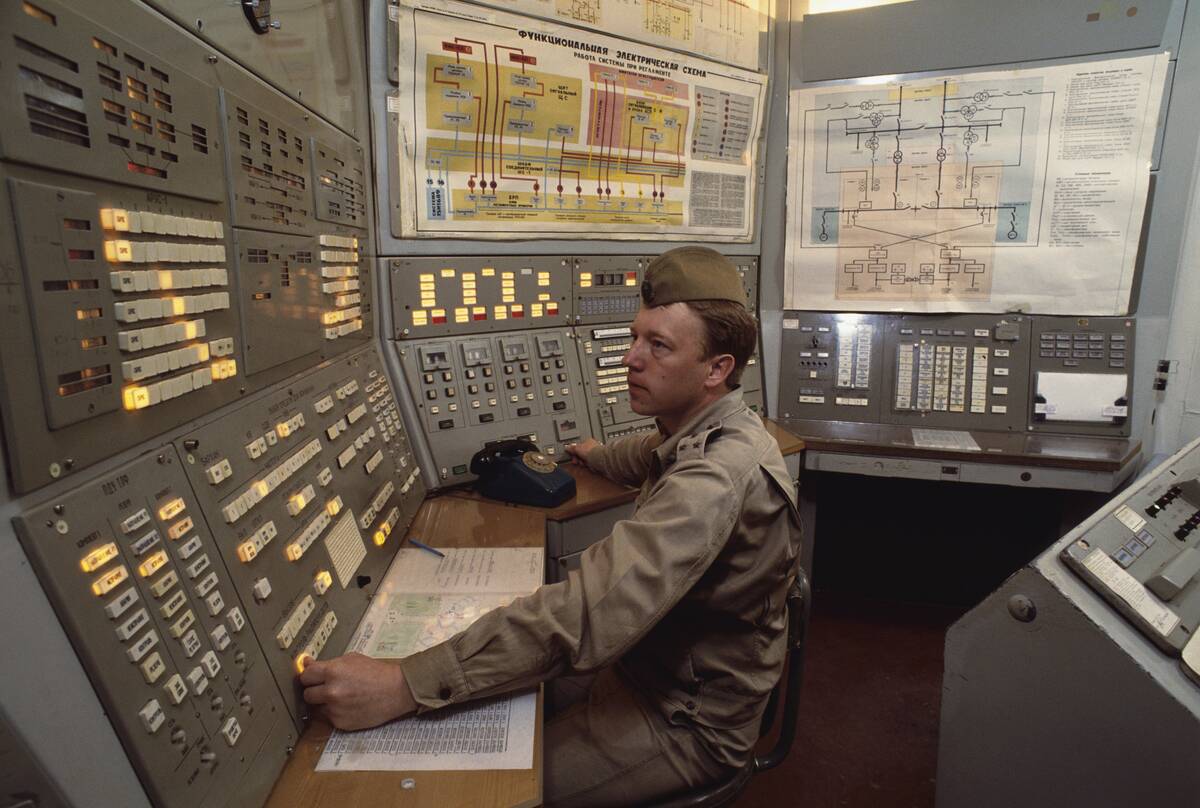
Although this photo wasn’t technically taken during the Cold War, it depicts something that the Russian government wouldn’t have dreamed of showing to English-speaking viewers just a few years before this photo was taken.
That’s because this is the scene of a nuclear missile base’s control room. Its retro panelling makes it hard to tell when this photo was taken, but it comes from outside of Moscow in 1992.
So Many Americans Can Still Remember Doing This
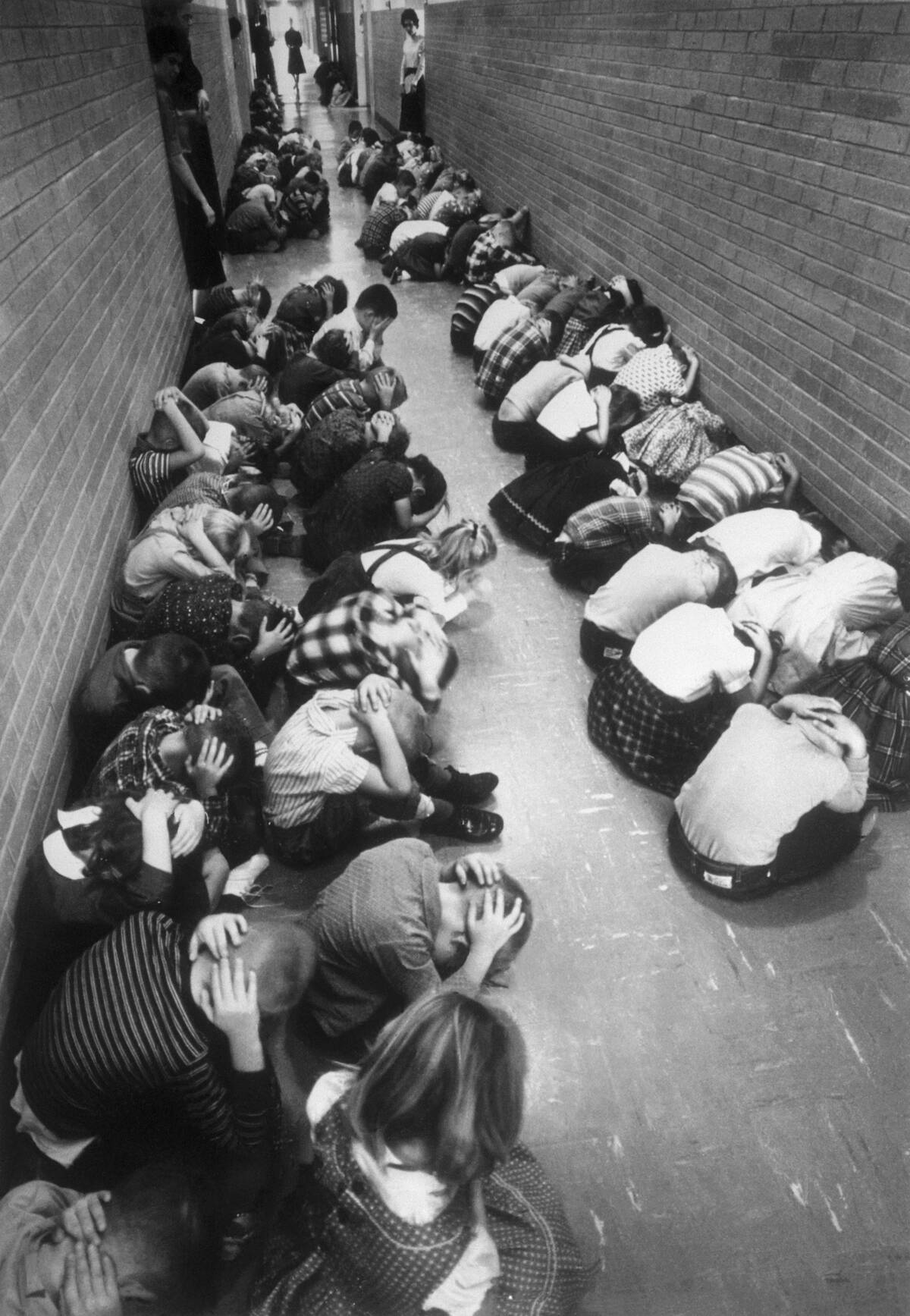
Although this image may be jarring to look at through modern eyes, it wasn’t an uncommon sight during the height of the Cold War. Here we see students at a school in Topeka, Kansas, crouching and huddling in the hallways as part of a civil defense drill.
These drills were known as “duck and cover” drills and characterized the individual response kids were supposed to have in the event of a Soviet attack. Of course, these drills were more for peace of mind than anything, as nothing can protect someone from a nuclear weapon.
Civil Defense Drills Weren’t Just For Children
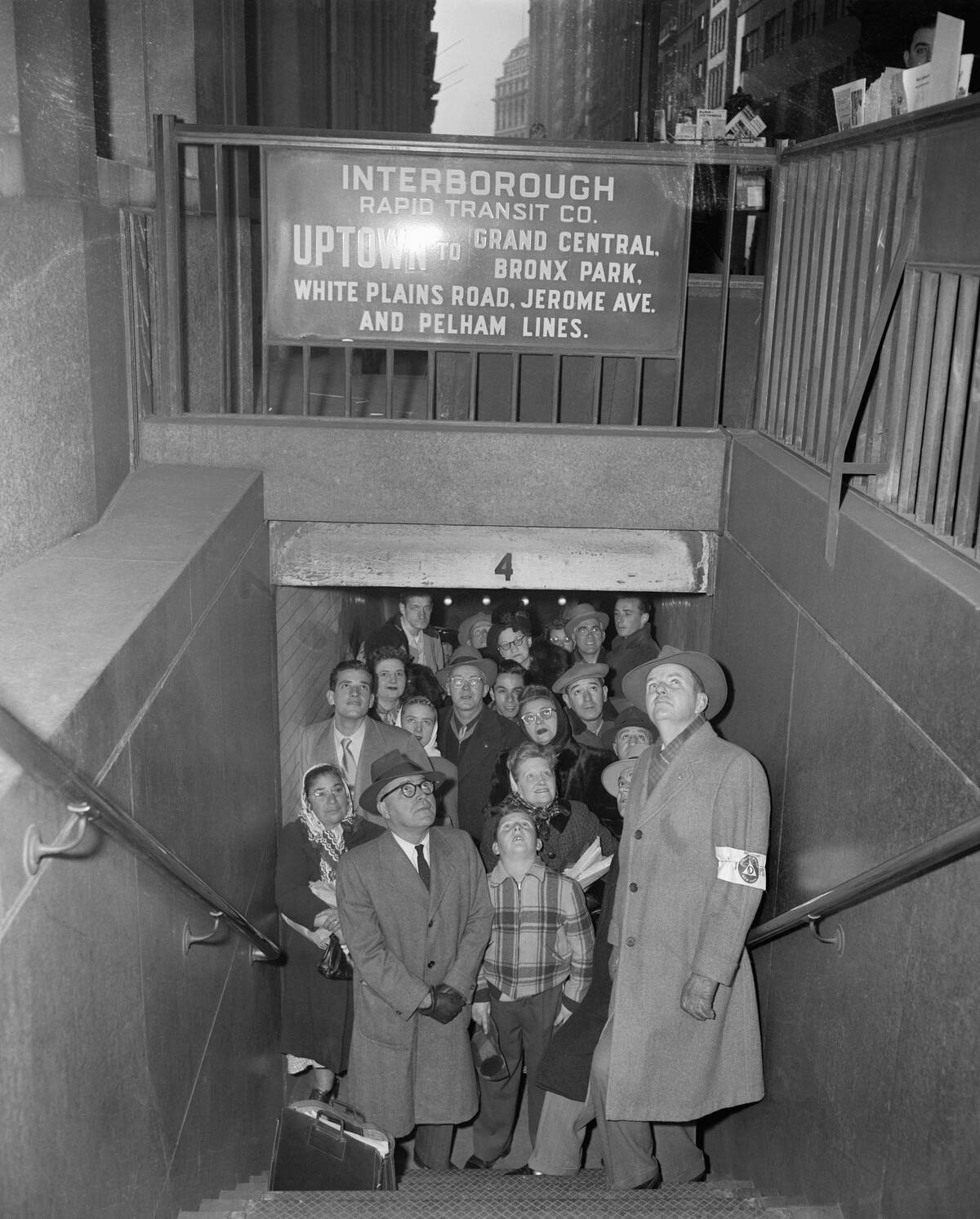
Although “duck and cover” drills were common in schools, some major cities had procedures intended to protect anyone who could be out in the streets during an air raid as much as possible. That’s why all of these people are huddling in this subway in New York City’s financial district.
Although this was just a drill, the procedure wouldn’t have been similar in a real emergency. As citizens take shelter in the subway, the air raid warden — wearing the white armband — waits for the all clear sign.
A Weapon That Was Best Left Unused
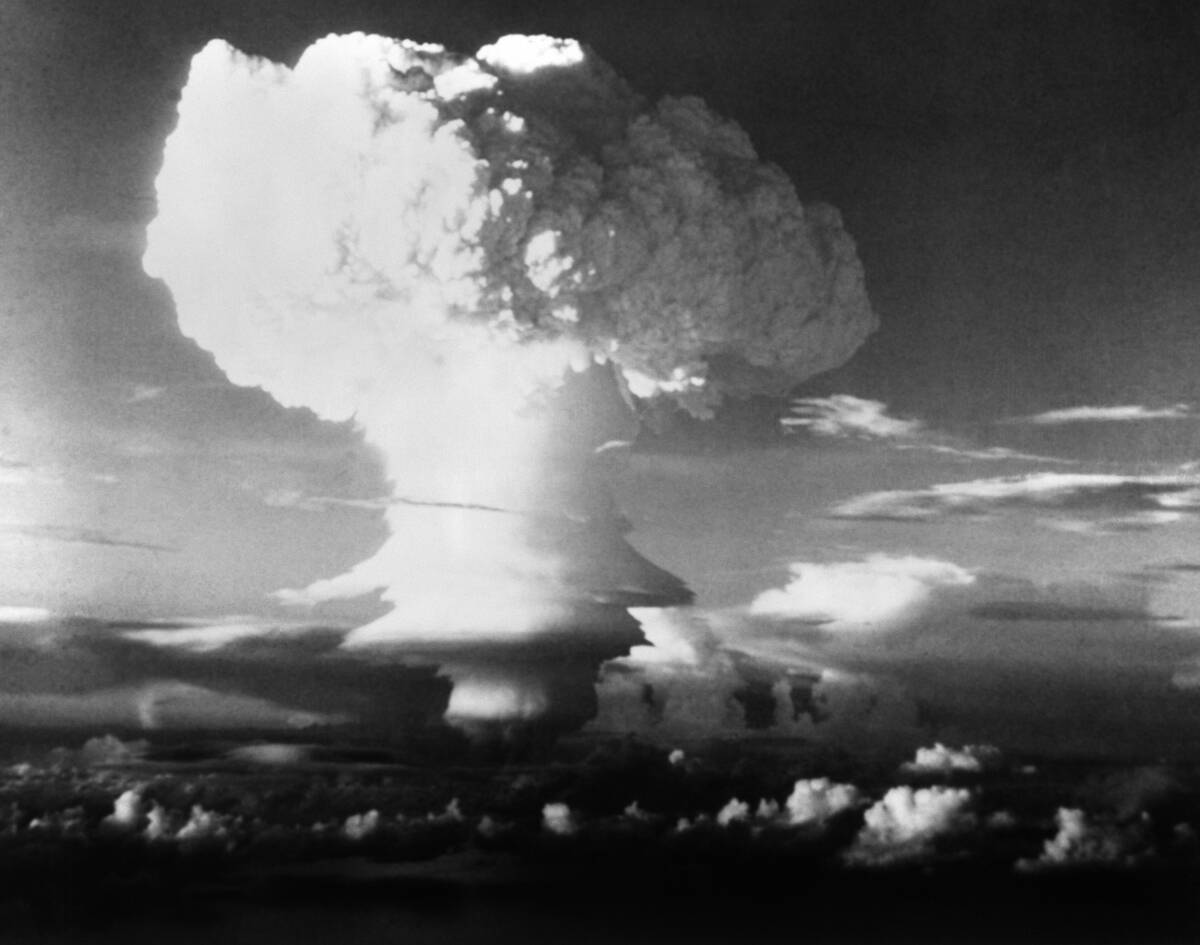
Although the end of World War II marked the only times in history that atomic weapons were used in acts of war, that doesn’t mean there weren’t plenty of other nuclear devices detonating during the Cold War. Much like this explosion in the South Pacific, however, those were limited to weapons tests.
That’s certainly for the best, as the depicted Operation Ivy tests of 1950 also marked the first time that a nuclear weapon based on hydrogen was tested. Since this is a more destructive version of the original atomic weapons, the effect on a civilian population would be catastrophic.
The Relief Was Palpable
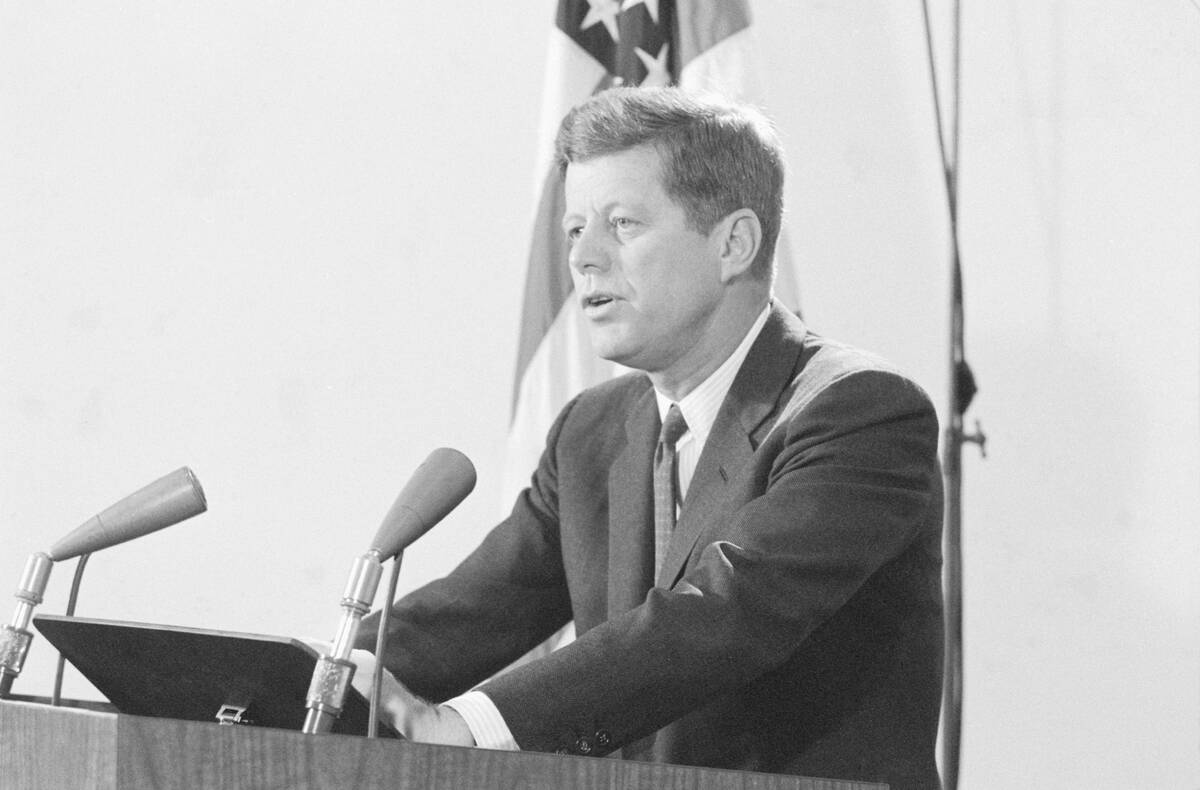
Although he may have had the same stoic facial expression in this address, President Kennedy had reason to be in much better spirits on November 2, 1962 than for much of the previous month.
That’s because this was the day he told the country that he had firm evidence that Soviet missile bases in Cuba were being dismantled pending further international inspection.
This Would Be Top Secret At The Time
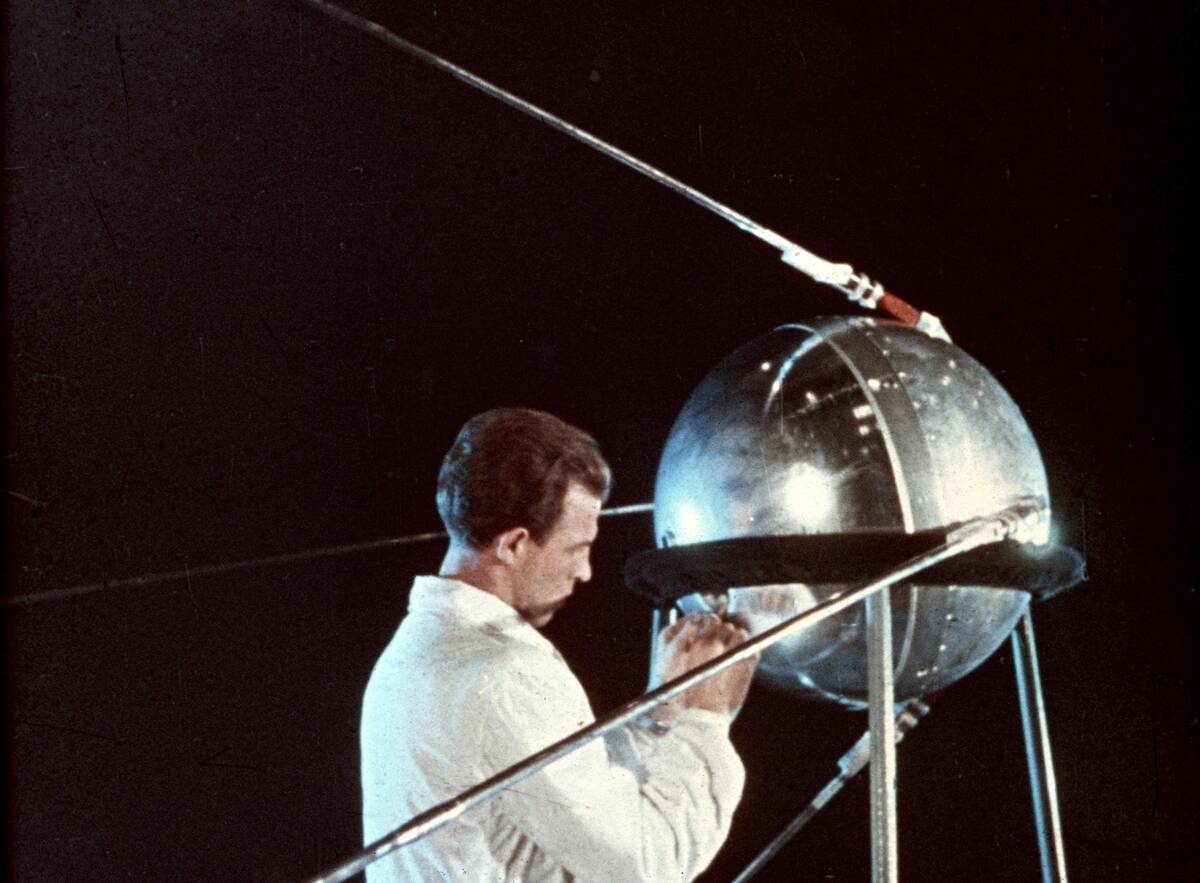
Although the device this Soviet technician is well-known now, it took the world by surprise when it first started transmitting signals from low orbit.
That’s because this photo from 1957 depicts Sputnik I, the first artificial satellite humanity ever launched beyond the Earth’s atmosphere. Since this was a Soviet achievement, America’s frantic response would be the beginning of the Space Race.
The Only Missile Movement They Wanted To See
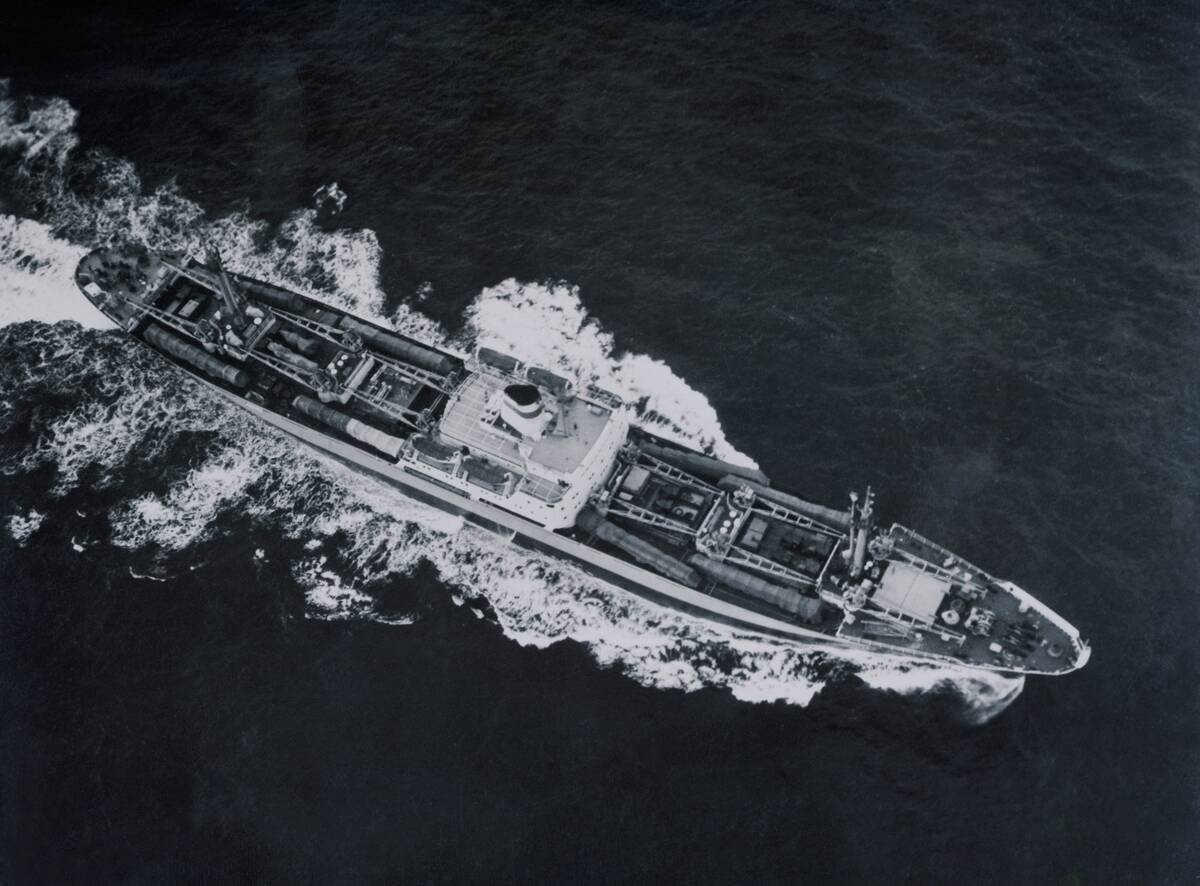
Normally, the sight of the Soviet cargo ship Anosov carrying eight ballistic missiles would be a cause for concern for America’s intelligence community. However, the truth is that they were likely more reassured than anything when they spotted it.
That’s because this transportation occurred in the wake of the Cuban Missile Crisis, which meant that the missiles were being moved out of Cuba and back towards Soviet territory. That meant America no longer had to worry about a close-range nuclear threat.
Many Celebrities Knew Which Way The Wind Was Blowing
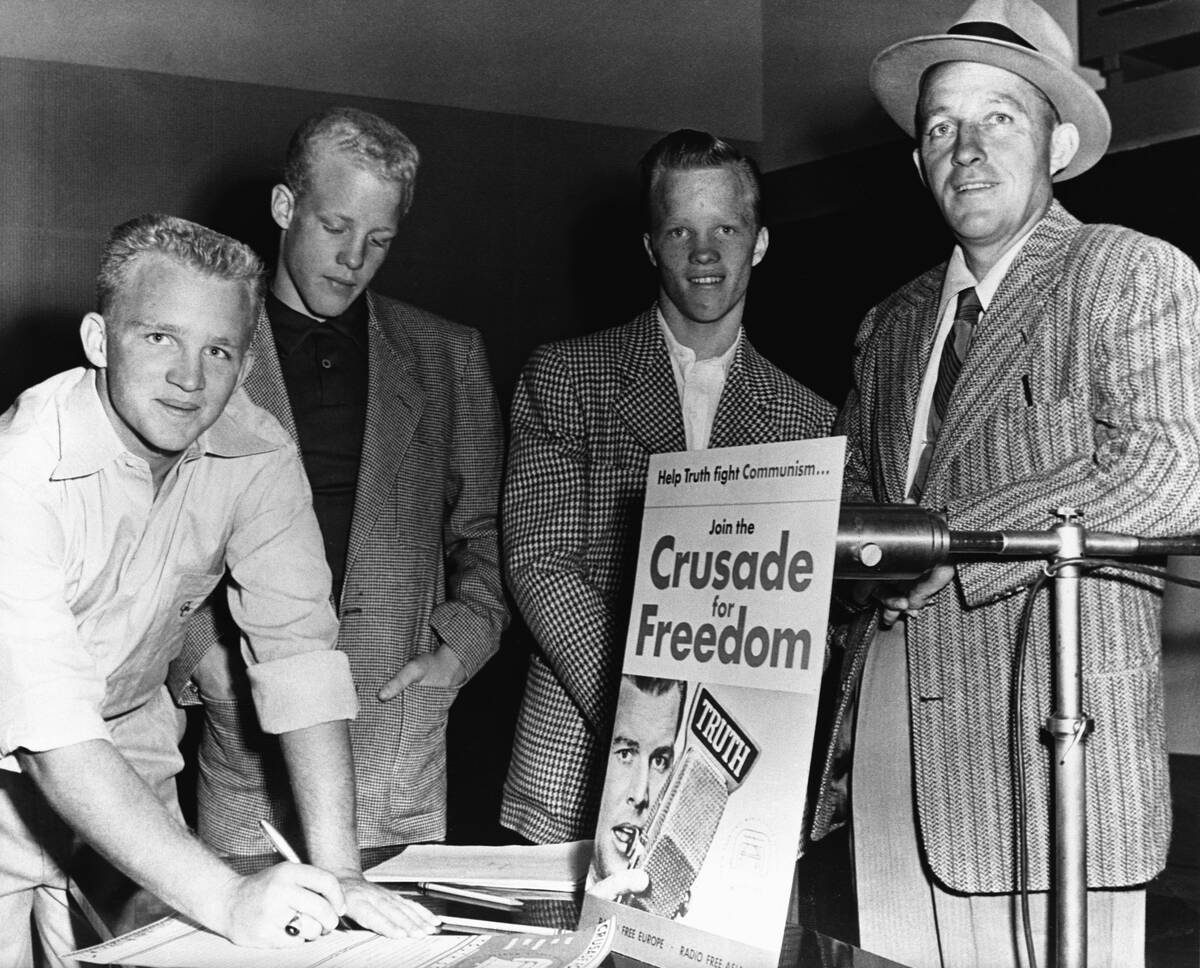
Whether it was out of genuine zeal or as a means of removing any doubt in their loyalty, famed singer Bing Crosby and his sons, Gary, Dennis, and Phillip, joined Radio Free Europe’s campaign known as the “Crusade For Freedom” on September 26, 1951.
Their part of it was centered around a transcontinental radio show called “Crusade with the Crosbys.” Croby’s youngest son, Lindasy, would later fill in from Los Angeles.
A Sign Of The Anxieties Of The Day
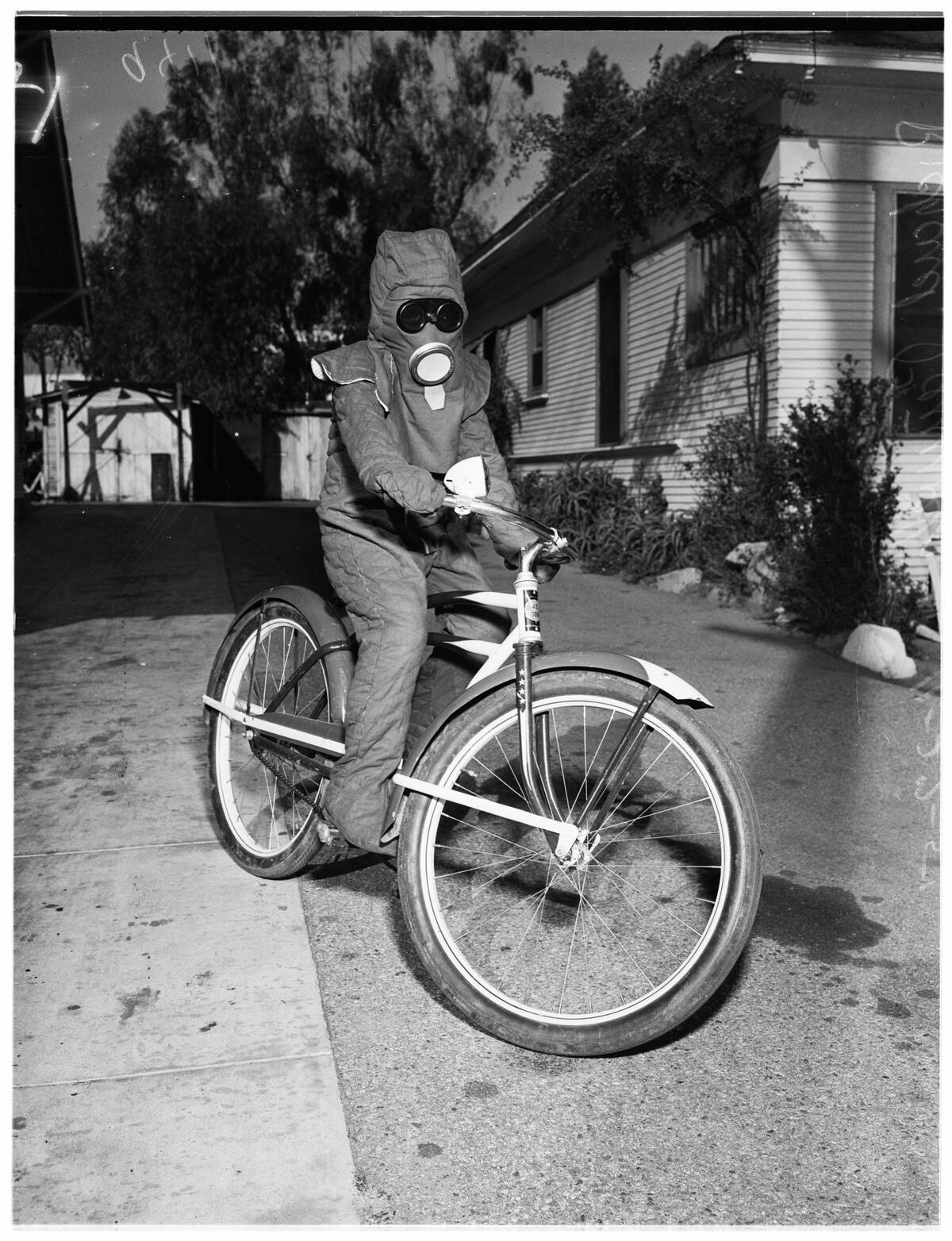
Given the spectre of nuclear annihilation that characterized the underlying fears of the Cold War, it stands to reason that Americans would turn to as many options as they could to prepare themselves for the worst-case scenario. In this case, six-year-old Richard Pauwels was riding his bike while wearing a gamma ray suit.
Unfortunately, such a suit was likely more of a security blanket than a legitimate means of protection from nuclear fallout, much like “duck and cover” drills or the shelters some citizens built. The simple truth is that a suit that can fully protect oneself from radiation doesn’t exist now, let alone in 1951.
These Parades Were Always A Spectacle In Russia
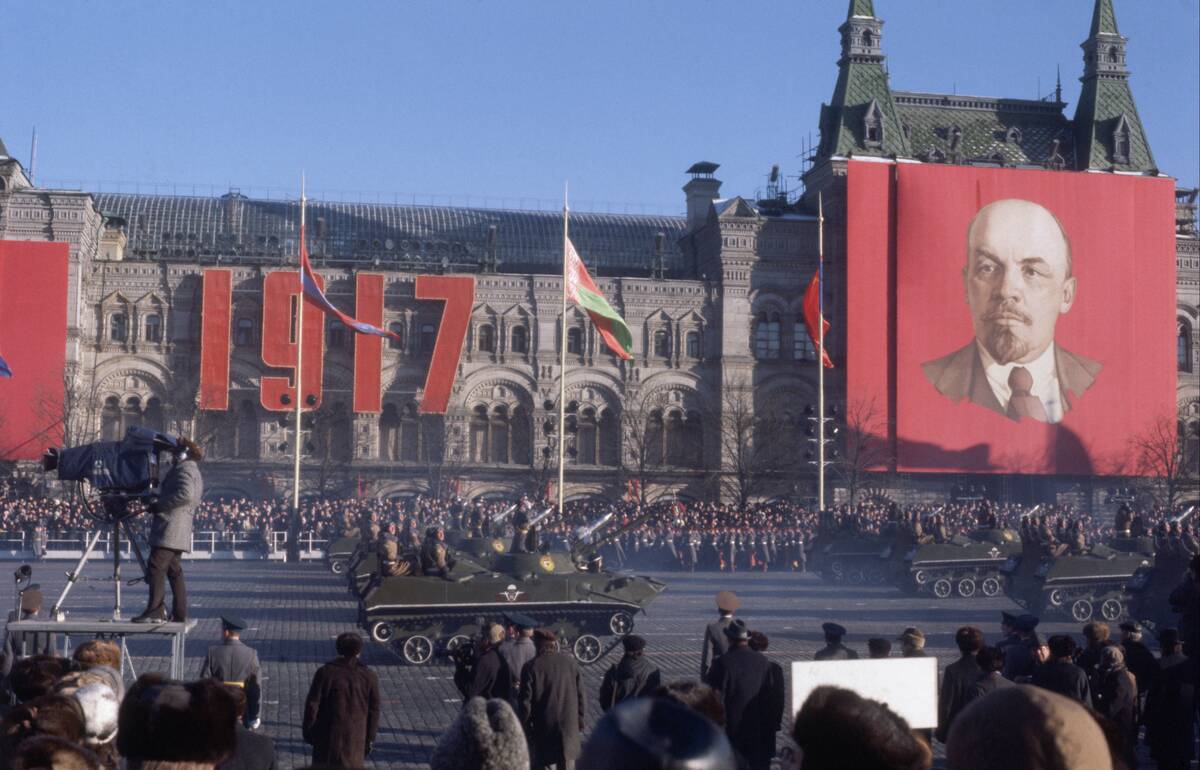
The anniversary of the October Revolution was always the subject of massive celebrations in the Soviet Union and those celebrations always featured elaborate military parades like this.
On the 61st anniversary of the revolution in 1978, however, the cavalcade of military equipment and the adoring crowds had an eye-catching backdrop in that red banner featuring Lenin’s face and the giant red “1917” that marked the beginning of the Soviet Union.
Not Everyone Liked Ike And This Artist Had A Reason
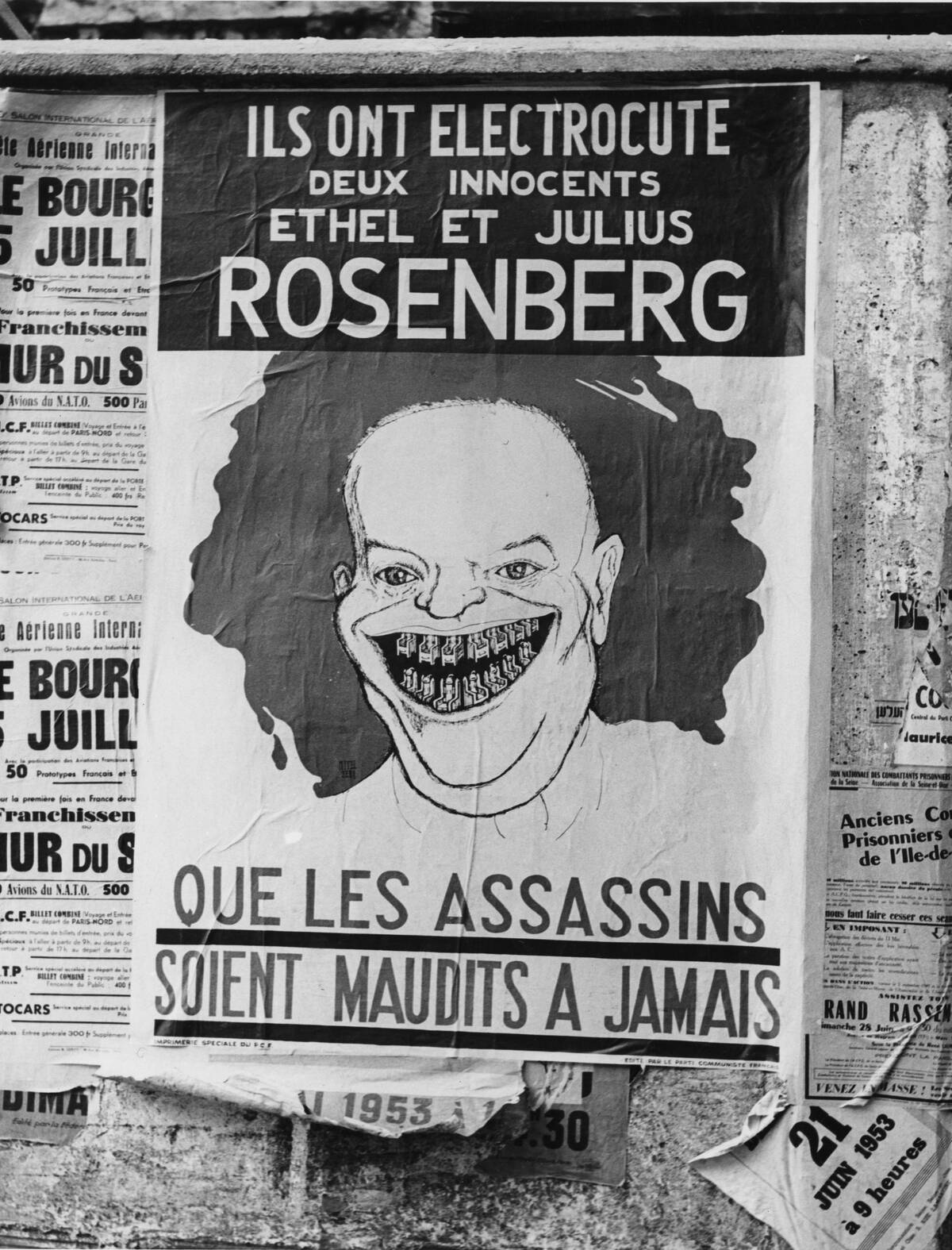
Although Eisenhower remains a respected and widely-approved president in American history, no president is without controversy. In this case, this French poster is condemning the president (who has electric chairs for teeth) for the execution of Ethel and Julius Rosenberg, who stood accused of espionage.
The poster was attributed to French Communists and reads, “‘They electrocuted two innocents, Ethel and Julius Rosenberg. May the murderers be forever cursed.”
The Cuban Missile Crisis Was Frightening For The World
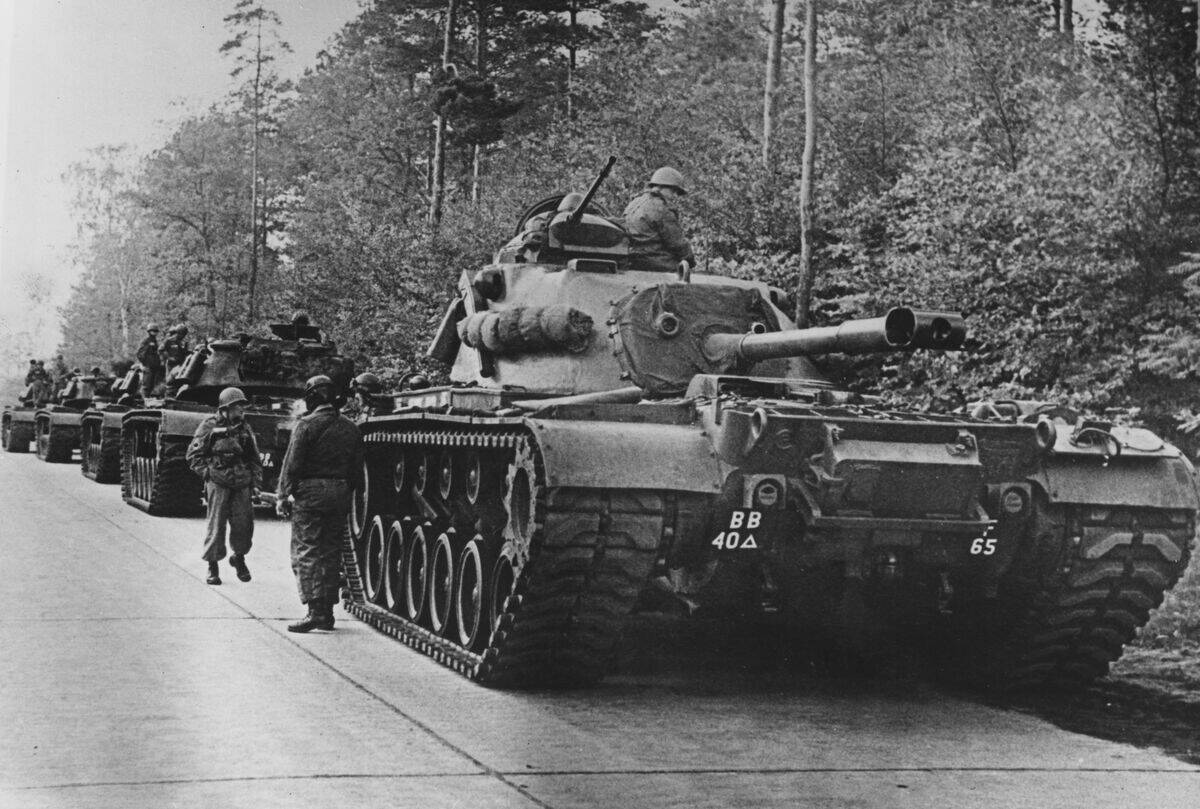
Although tensions were particularly and understandably high in the United States during the Cuban Missile Crisis, the world waiting on pins and needles due to the chain reaction a hasty resolution could’ve spelled for everyone on Earth.
Indeed, that’s why these American tanks in West Germany were on high alert on October 25, 1962, when the crisis was still very much underway. Once the Soviets agreed to pull the missiles out, a sigh of relief could practically be heard the world over.
Even At The Time, The Marshall Plan Was Controversial
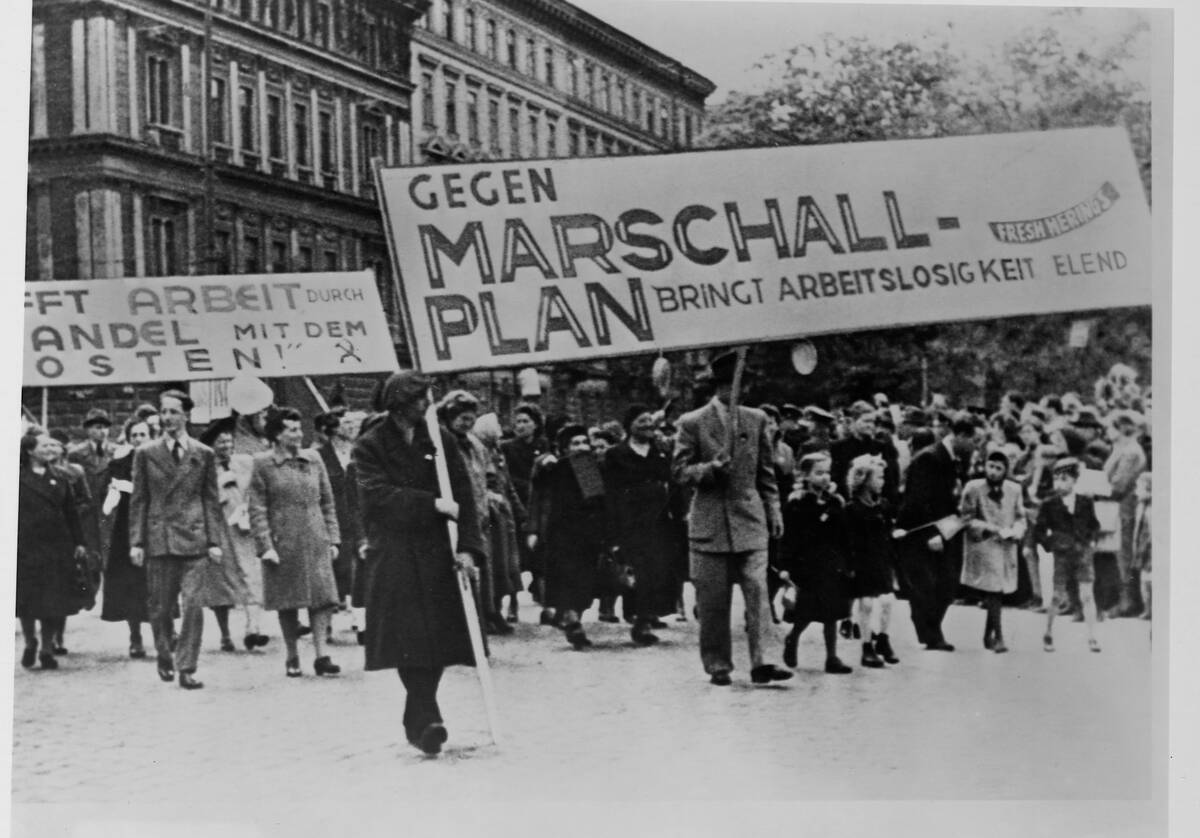
Although the American Marshall Plan was intended to encourage economic redevelopment and free trade throughout post-war Western Europe with a $13.3 billion aid package, that didn’t necessarily mean it was a welcome development to everyone in those countries.
For instance, this 1948 protest in Germany features a banner that states this crowd’s position on the plan clearly: “Against Marshall Plan – brings unemployment misery.” Since the other banner encourages trade with the East, this was a pro-communist demonstration in East Germany.
Nuclear Tests Were Fascinating And Terrifying At Once
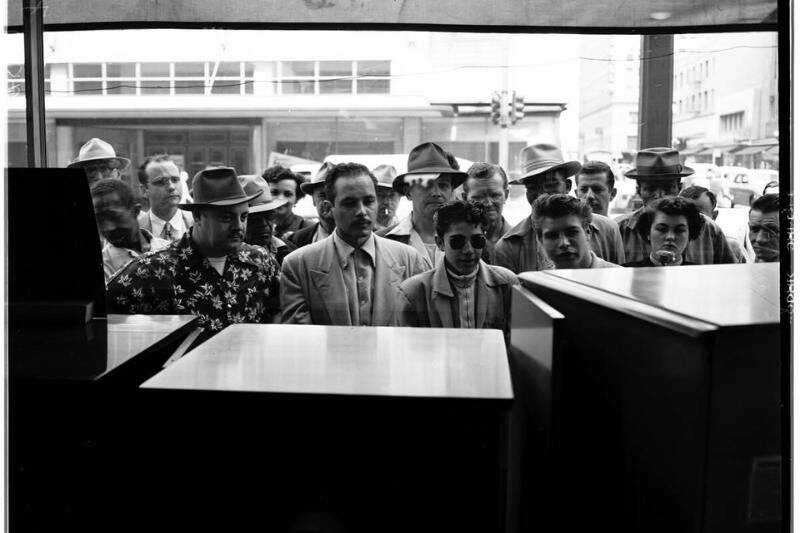
When the news was big enough in the mid-century years, it wasn’t uncommon for people to gather outside of electronics stores like this one on 7th Street and Broadway in New York City to watch the footage as it unfolded. On one day in 1952, this crowd stood in silence as an atomic test was broadcast.
Considering that neither the Soviet Union nor China conducted any significant nuclear weapons tests in 1952, this could either be one of the Operation Tumbler–Snapper series of American tests or the famous Ivy Mike test on November 1, 1952. It simply depends on what time of year it was when this photo was taken.
The First Moments Of The Cold War
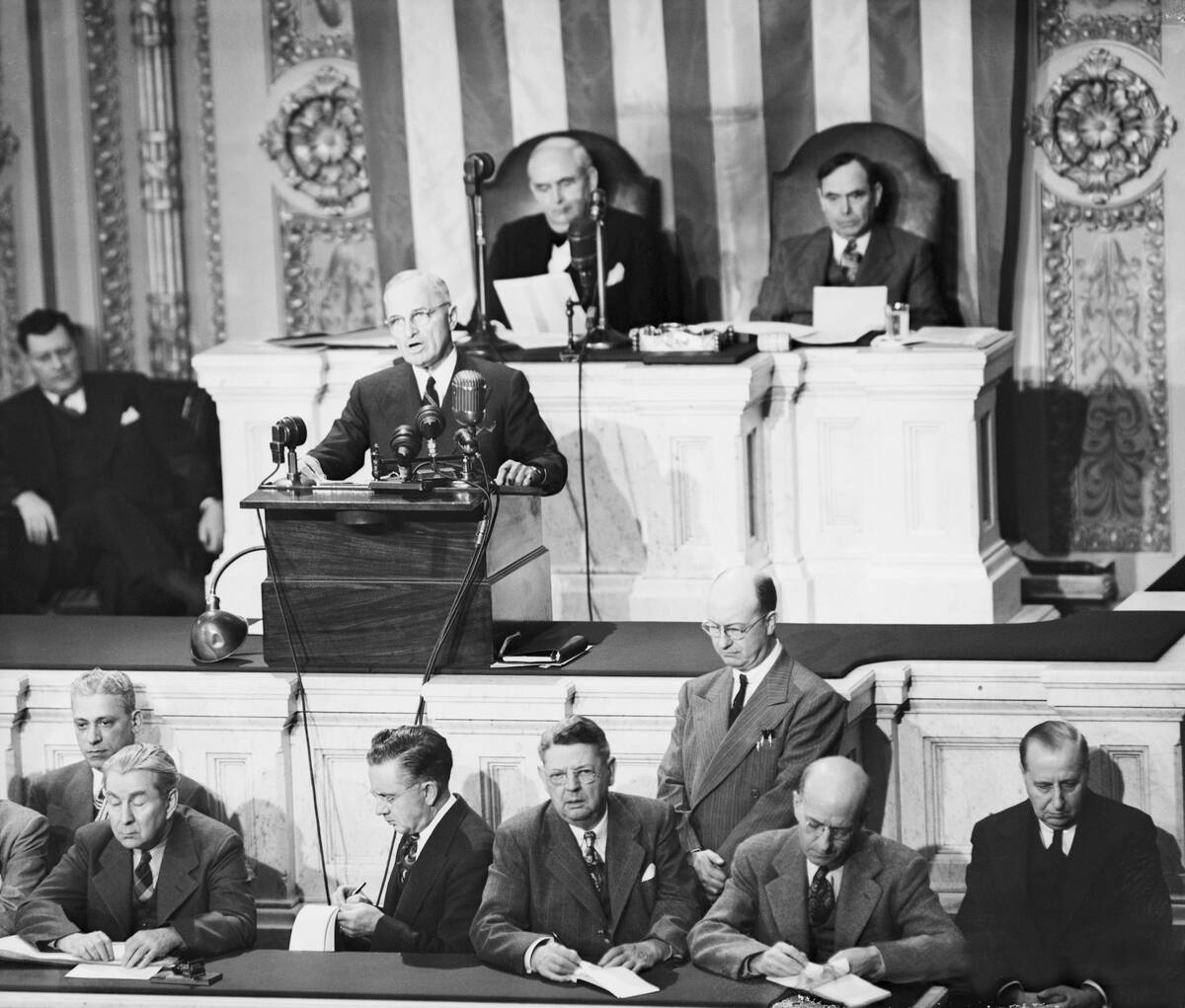
Although the Cold War would get all the more tense as the world’s powers built their nuclear arsenals, Soviet concerns about U.S. nuclear capabilities and American concerns about the spread of international Communism were palpable as early as 1947.
That year, President Harry S. Truman delivered this address during a special joint session of Congress asking the legislative branch to approve measures supporting Greece and Turkey. With $400 million and the help of some American military advisors, Truman figured these nations could be bulwarks against Communism.
They Probably Didn’t Live Up To Their Name
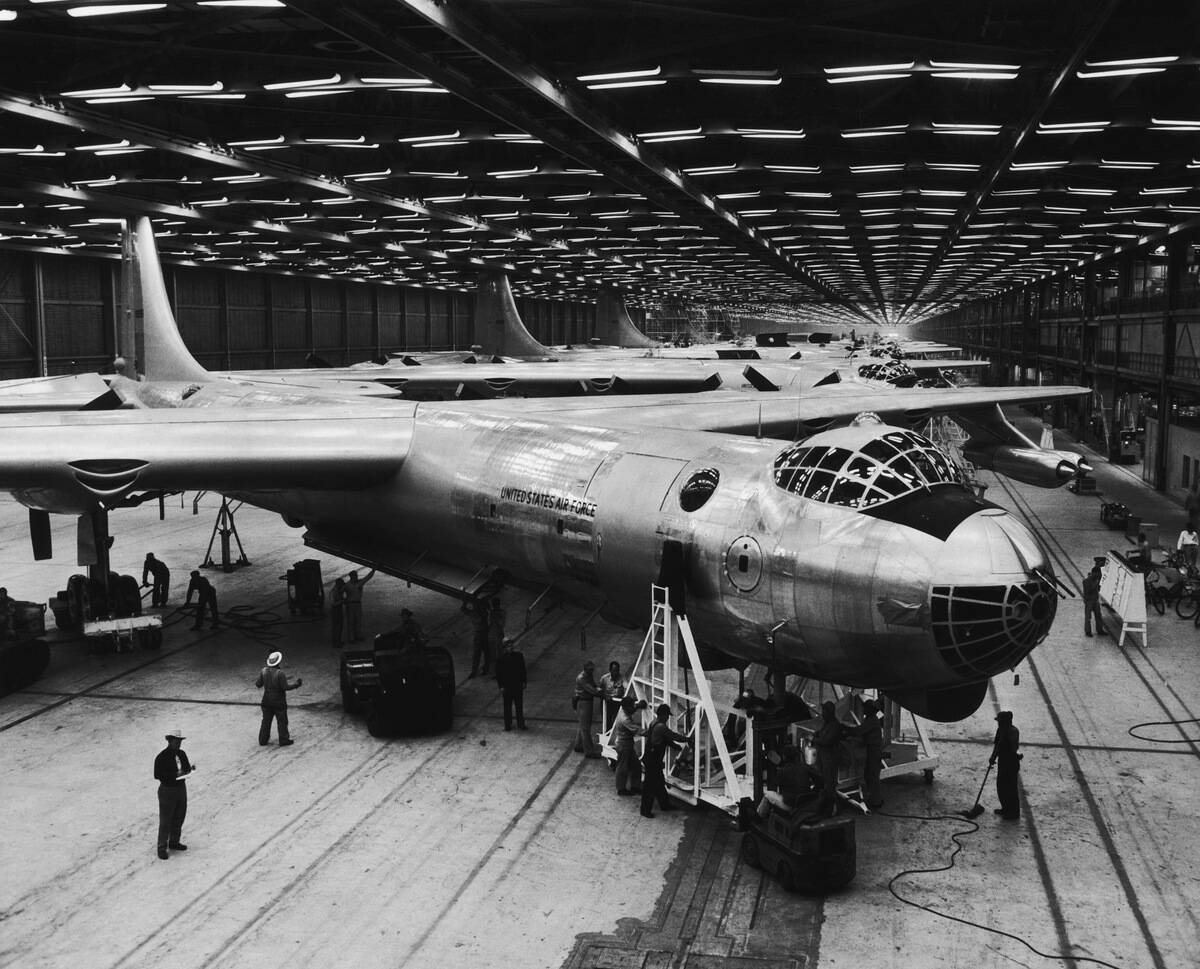
Considering how much the Cold War was centered around the potential threat of nuclear attacks, it stood to reason that the biggest superpowers involved would feel compelled to build their own arsenals.
Although nuclear missiles could later be propelled from underground silos, these “Peacemaker” strategic bombers would have been the most likely way to deploy them in 1951. Despite their 230-foot wingspans, that’s why this giant hangar is packed with them.
This Wasn’t Such A Rare Sight At The Time
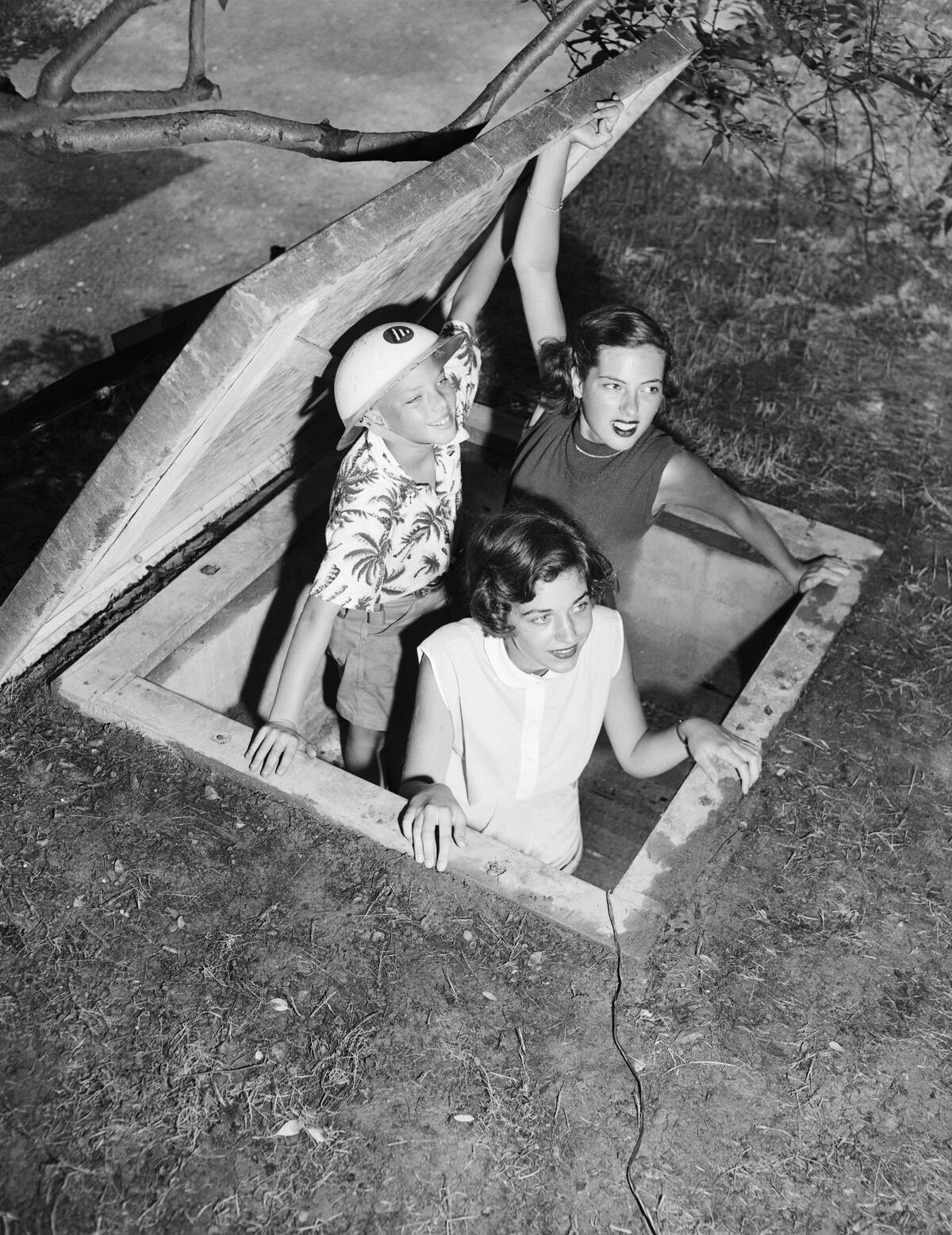
Although it was likely clear to many even at the time that duck and cover drills wouldn’t accomplish anything, some citizens found more peace of mind when they had access to fallout shelters like the one 10-year-old Mitchell Legler, his sister, and her friend are trying out here.
Of course, it’s unclear just how many of these shelters would have been effective if a nuclear disaster did befall people who owned shelters like this, but the happy reality is that they never had to find out.
The Birth Of An Alliance That Still Stands Today
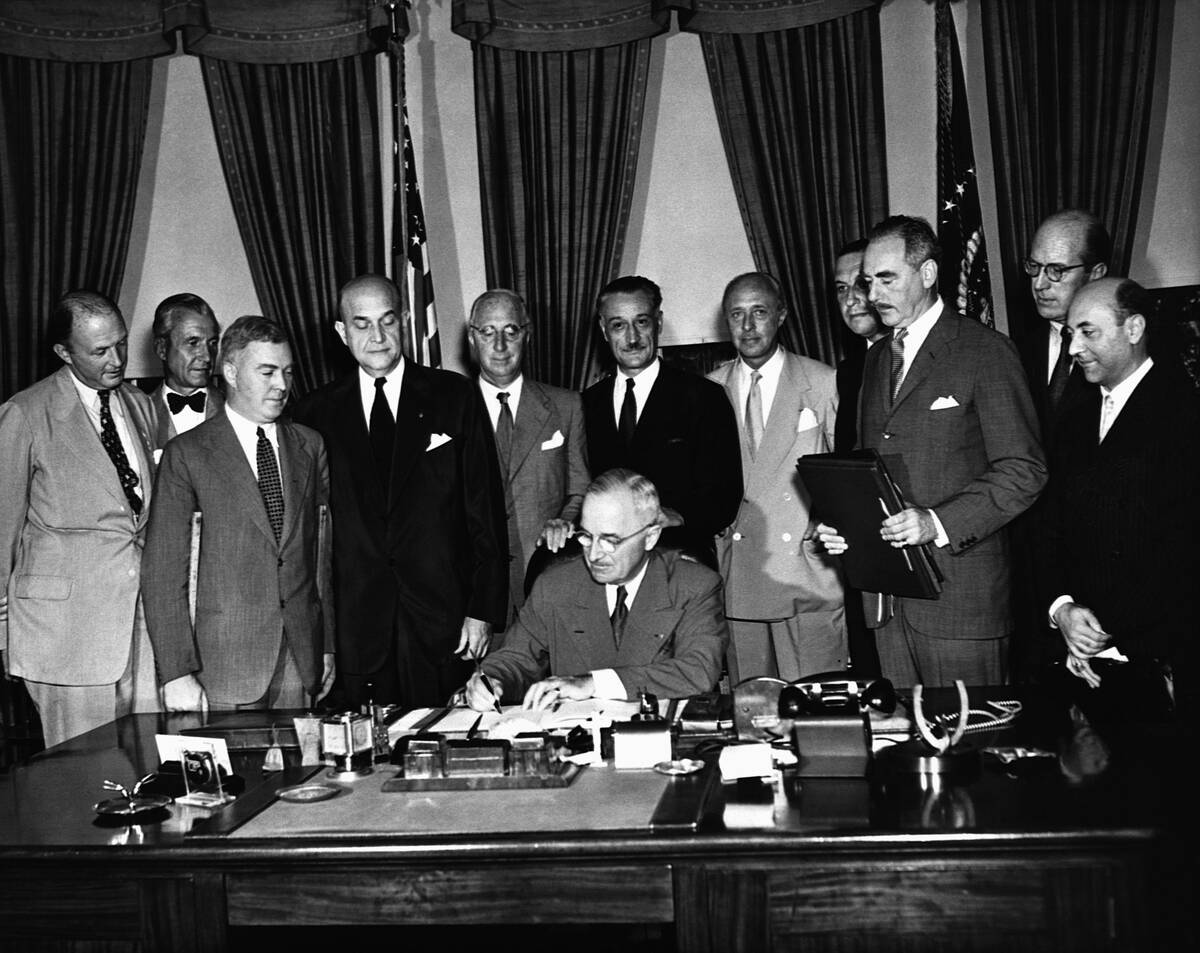
Although there are likely many documents a president will sign as a group of politicians and parties with a vested interested look on, these papers on President Truman’s desk were so significant as to echo through every decade since.
That’s because he was signing the North Atlantic Pact, which was the article that empowered the nations represented by the diplomats behind him to create the North Atlantic Treaty Organization, which still stands in the Western world today.
Putting A Pleasant, Smiling Face On Disaster
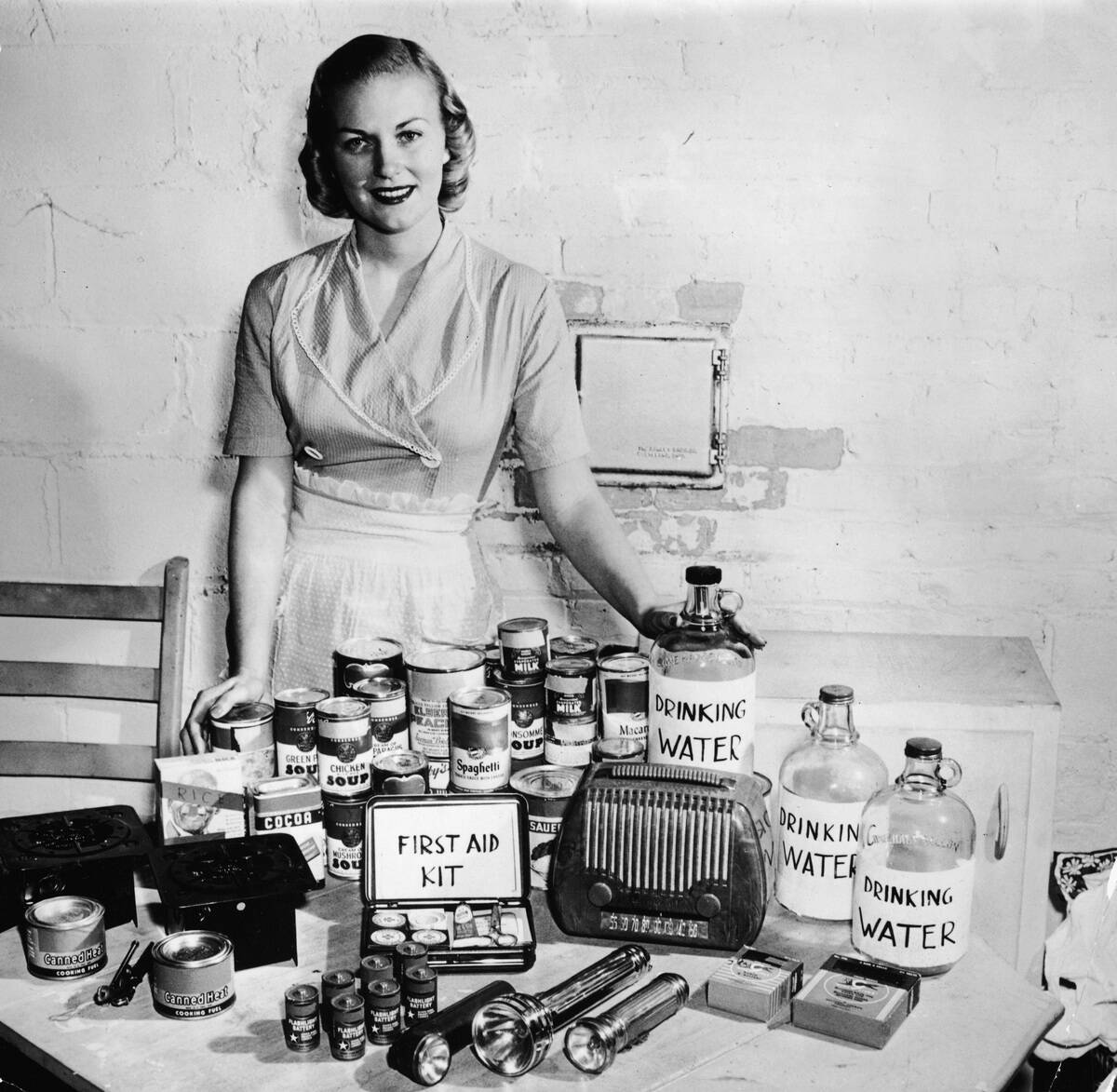
In this photo from the 1950s, we can see a model presenting herself as an average housewife of the era and showing off the supplies Americans were advised to keep on hand to stock their fallout shelters.
Indeed, there’s an odd, vaguely creepy juxtaposition of the anxiety and misery of a nuclear threat with the pleasant demeanor that people were expected to maintain at the time. No wonder these aesthetics inspired the Fallout video games so heavily.
A Hard Year For West Berlin
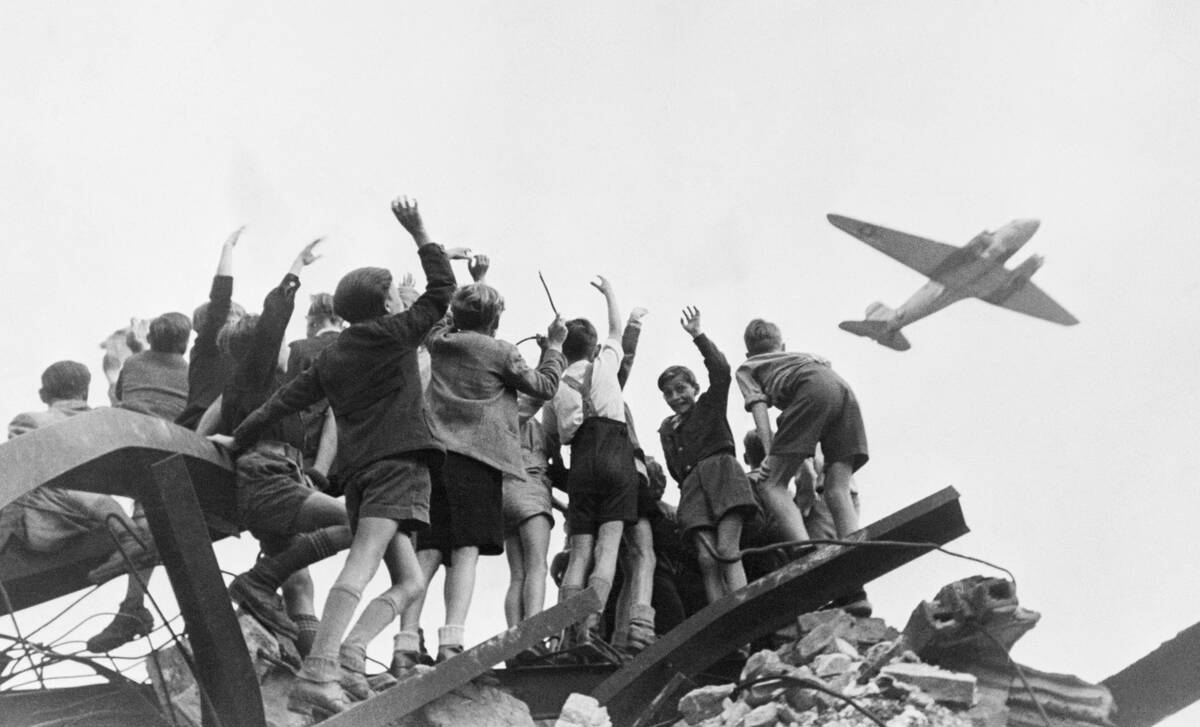
Although the animosity and paranoia of the Cold War would be felt around the world by the 1950s, the bifurcated Germany that existed at the end of World War II had already felt these effects before the 1940s were even over.
That’s because Soviet forces besieged West Berlin between 1948 and 1949, which prompted American and British forces to airlift food and other supplies to the struggling city. Indeed, that’s why these German children are cheering on this American cargo plane.
Floridians Had A Tense Reminder Of The Missile Crisis

If someone were to visit George Smathers Beach in Key West, Florida in October of 1962, chances were good that they would come across once of six missile launchers like the one pictured here installed on the beach.
Since Cuba was confirmed to have ballistic missiles within its borders at the time, these launchers were intended to shoot down any aircraft that could potentially drop any explosives on American soil. Fortunately, they never needed to be used.
A Painful Distance Between Them

While the geopolitical strategy behind splitting Berlin into two may have made sense for American and Soviet diplomats, but it was disorienting and deeply hard to endure for those actually living in Berlin. Not only was it risky to talk to friends and family members on the other side, but it would be decades before they could embrace.
It is that context that gives this photo a particularly solemn atmosphere. It depicts a young woman and her boyfriend carefully balancing on a beam near the top of the Berlin Wall to talk to her mother in East Berlin.
Nuclear Stockpiling Had Long Gotten Out Of Hand
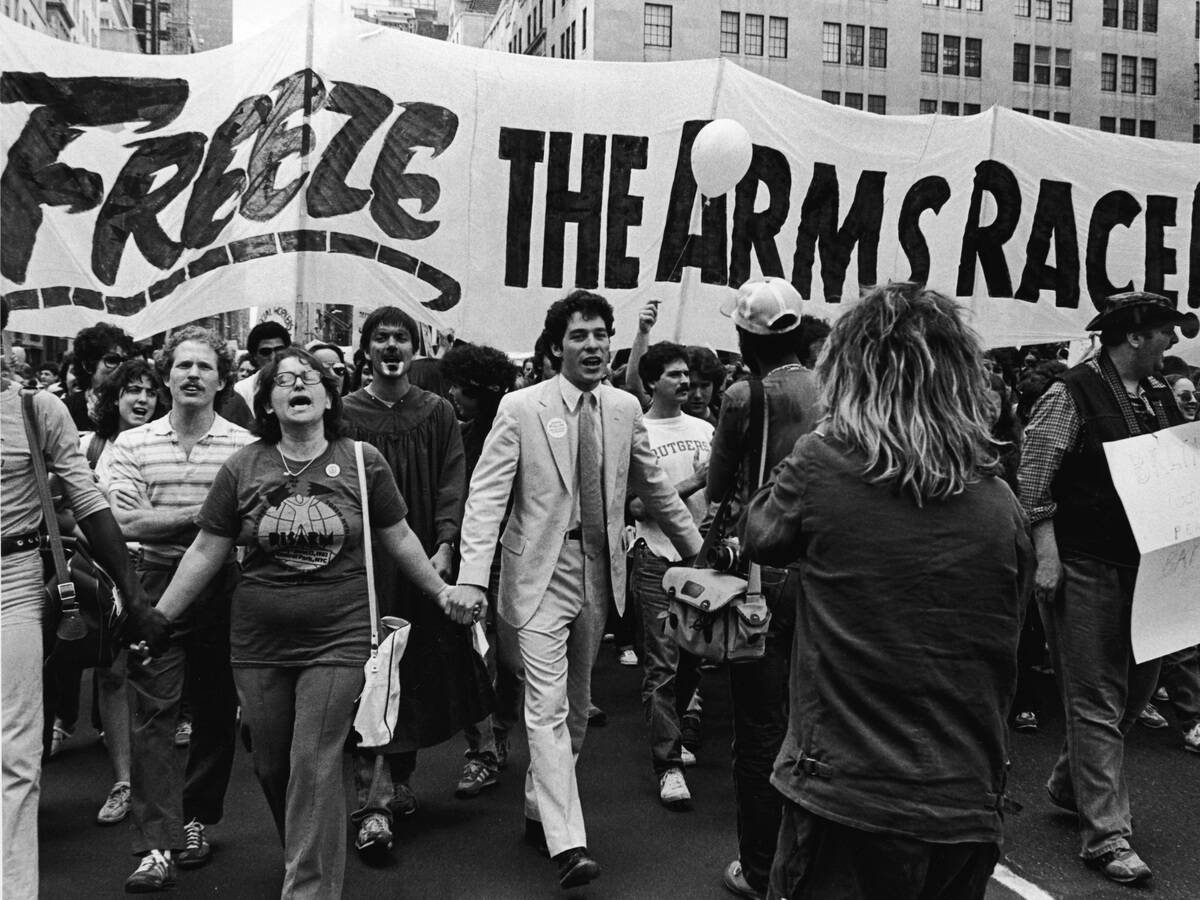
Although the hippie movement of the ’60s presented nuclear disarmament as one of their major goals, that aspect of American counterculture didn’t exactly die out with them.
While they certainly abhorred the existence of weapons that could extinguish all life on Earth, that feeling was just as strong by 1982, when both America and Russia’s nuclear stockpiles were larger than either nation could realistically ever need. Hence, this 750,000-strong nuclear disarmament rally in New York City.
Same As It Ever Was
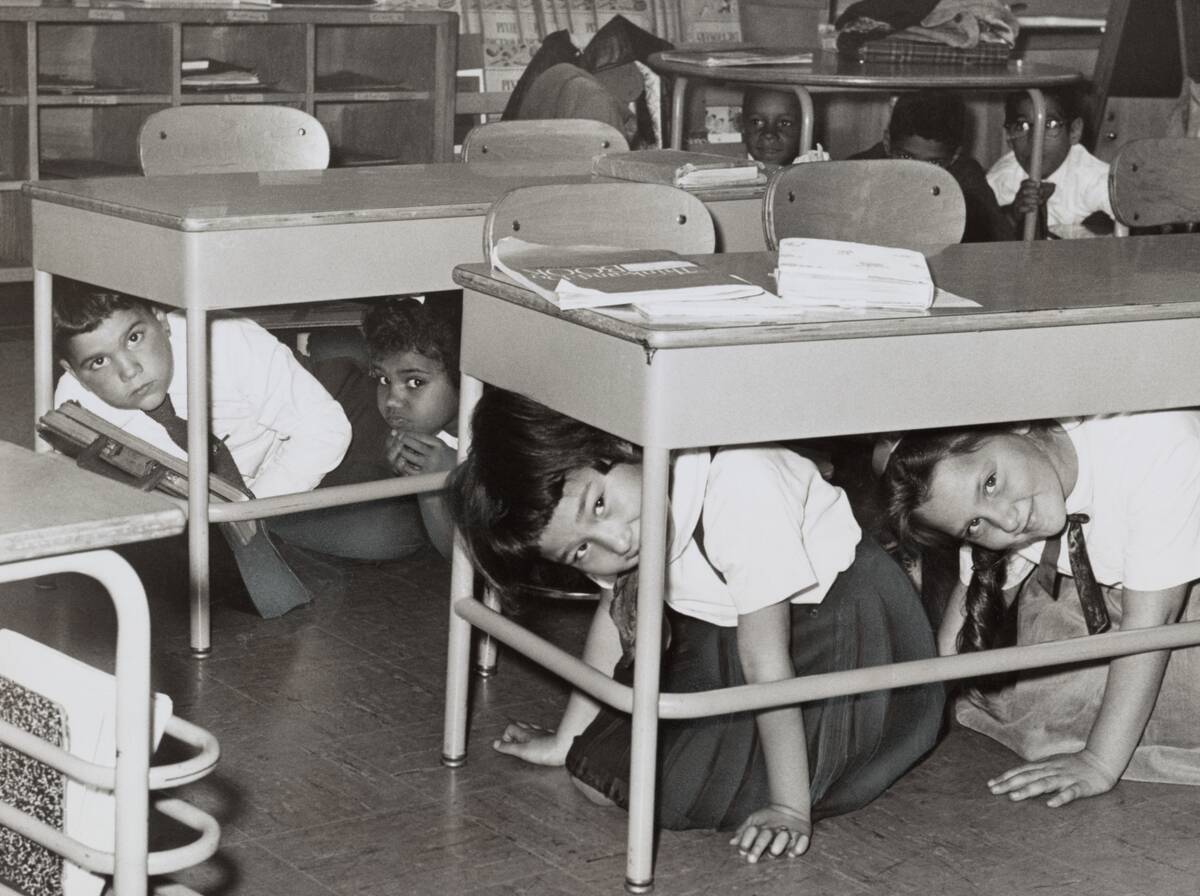
Although the threat that the duck and cover drills of old differs from the reason for lockdown drills in modern schools, one thing that hasn’t changed concerns the range of reactions school children have when it’s time for one of those drills.
As the scene of this Brooklyn classroom shows, there are always going to be a few kids in class who don’t take the nature of the drill seriously. However, the same cannot be said for the children crouching to the left.
A Very American Touch To This Shelter
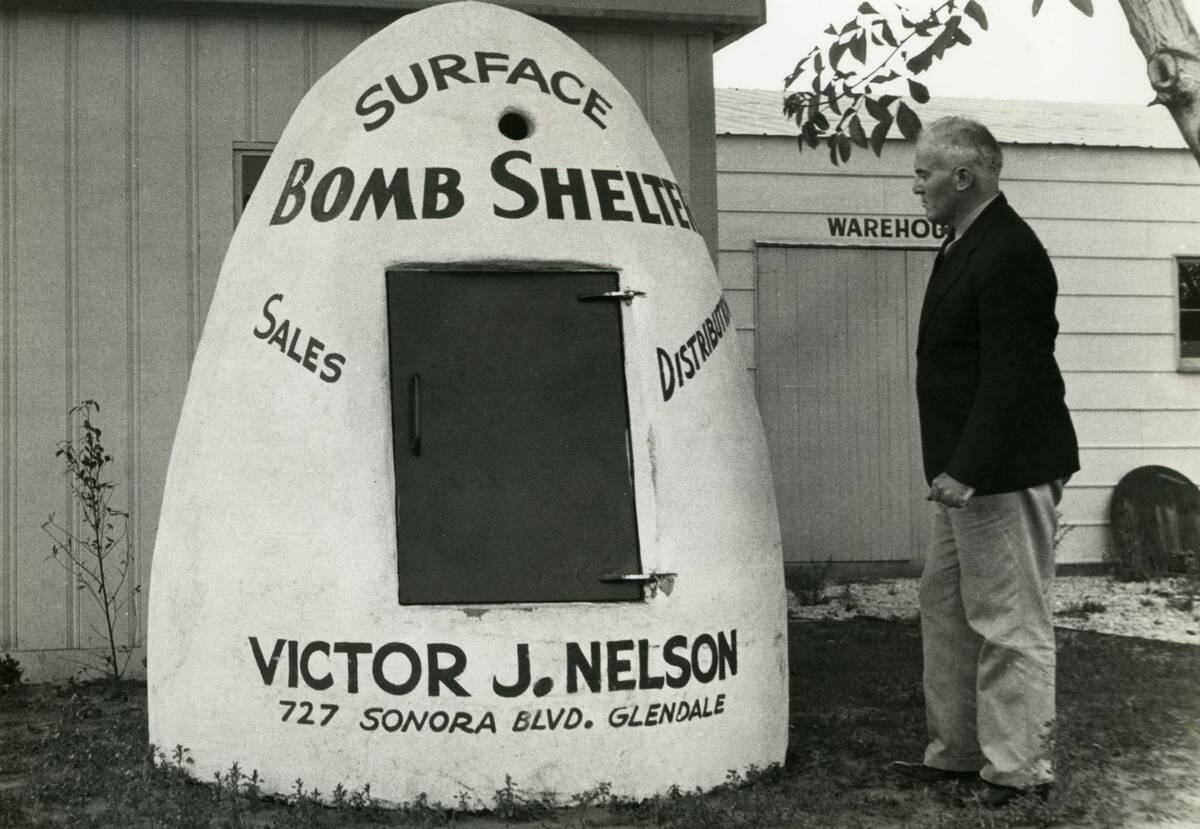
Even back in the old days, advertisements were a ubiquitous part of American life. So, while the United States was hardly the only nation where citizens thought build these shelters, it’s unlikely that anyone beat America to the idea of slapping ads on them.
After all, an above-ground shelter like this may have questionable utility in the event of a nuclear attack but no matter what happens, it’ll be great at advertising Victor J. Nelson’s sales and distribution firm.
A New Weapon The Soviets Were Keen To Show Off
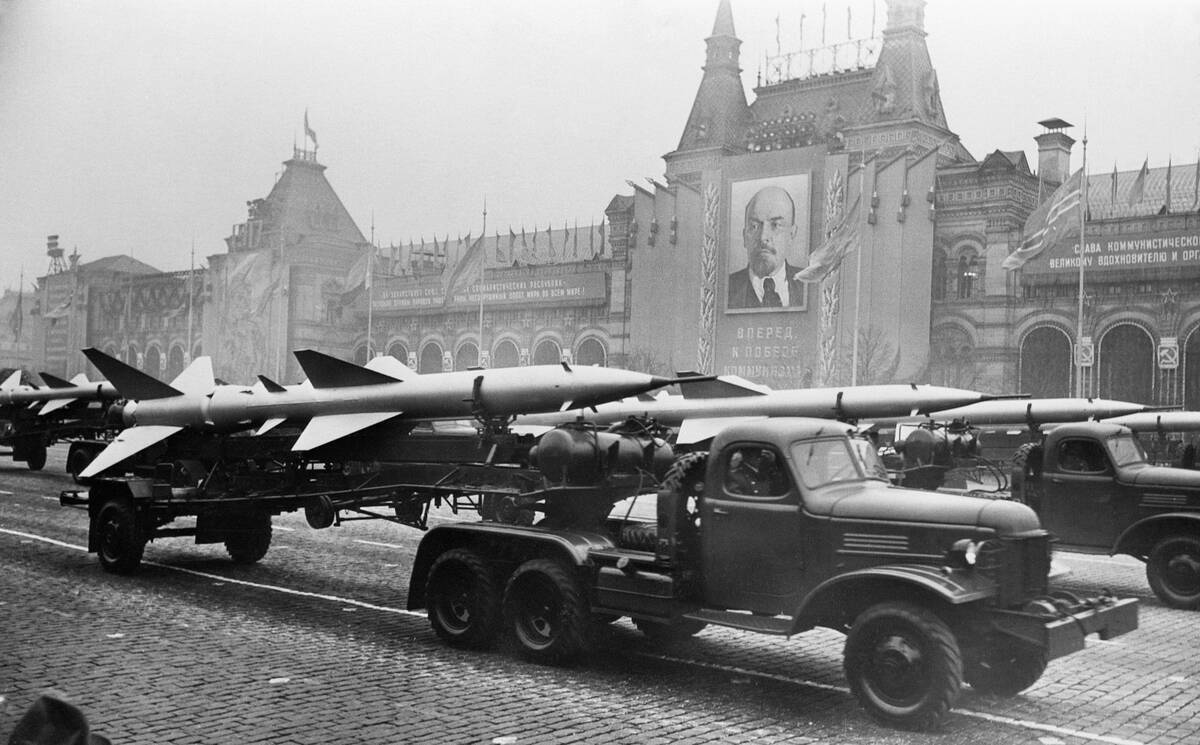
Although the annual military parades that ran through Moscow’s Red Square could always be expected on the anniversary of the Russian Revolution, they weren’t just there to mark the occasion.
As this event on the 40th anniversary of the revolution in 1957 makes clear, they were also opportunities for the Soviet government to convince the people that new weapons like these short-range, two-stage missiles would lead their nation to victory. Of course, those parades could be quite valuable for Western intelligence operatives for that reason.
The Beginning Of The End
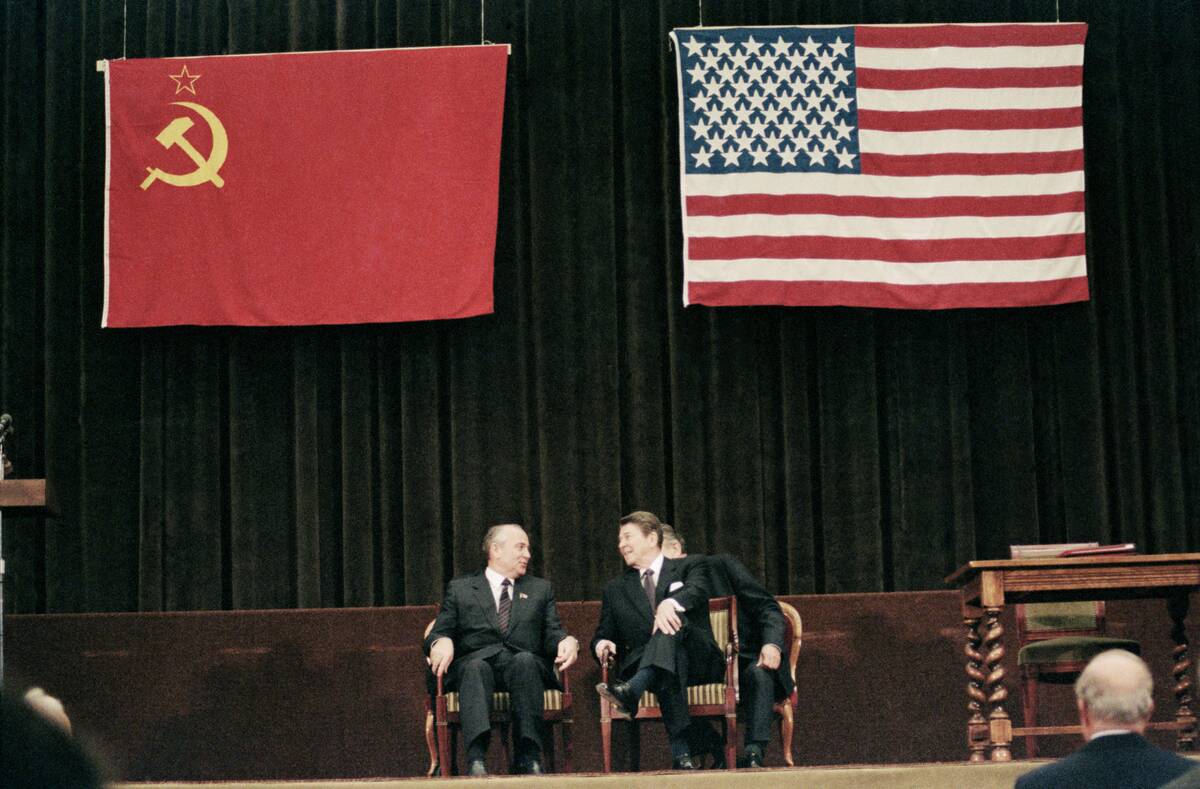
While Ronald Reagan took as hard a line against Communism as anyone likely expected from him, summits like this were still possible and productive, as Soviet Premier Mikhail Gorbachev showed willingness to reform the Soviet Union and cooperate with the West.
Indeed, it would be under his leadership that the Soviet Union would transition to a democratic state that would soon be open for American business. Indeed, the first McDonald’s in Moscow’s Pushkin Square was a major landmark for a reason.



